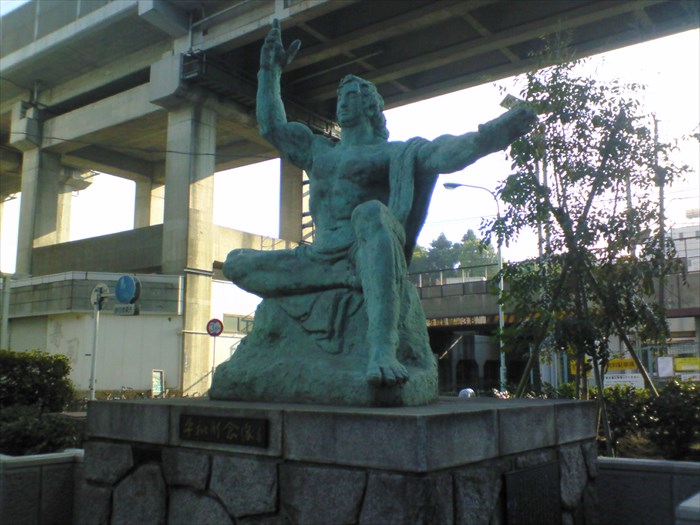Schera and I flew via Detroit to Tokyo/Narita and return in October 2008. The primary purpose of our trip was to attend -- for five days -- the 6th international conference on museums for peace in Kyoto and Hiroshima. Although mostly organized by museums in those two cities, the conference is an activity of the International Network of Museums for Peace (INMP), whose founder and coordinator, Prof. Peter van den Dungen, visited Knoxville in September 2007.
The secondary purpose of our trip was to visit selected peace monuments (including other museums for peace). To extend our visit beyond Kyoto and Hiroshima, we arrived in Japan a week before the conference and left a week afterwards. Notes about the monuments we visited are reported below under the names of the cities and areas we visited. The cities and areas are listed in the order in which we visited them.
This web page describes and illustrates ___ peace monuments, of which ___ were visited  and 49 not visited
and 49 not visited  , during a ___-day visit to Japan in October 2008. We traveled almost entirely by train. Our route is approximated on the highway map below. You can use the controls to zoom in and out of this Google Map, as well as pan back and forth. (According to Google, the minimum distance marked on this map is 2,921 km and would require 49 hours of continuous driving.)
, during a ___-day visit to Japan in October 2008. We traveled almost entirely by train. Our route is approximated on the highway map below. You can use the controls to zoom in and out of this Google Map, as well as pan back and forth. (According to Google, the minimum distance marked on this map is 2,921 km and would require 49 hours of continuous driving.)
A = Narita International Airport
B = Tokyo (Shinagawa Ward)
C = Omiya, Saitama Prefecture
D = Nikko, Tochigi Prefecture
E = Higashi Matsuyama, Saitama Prefecture
F = Omiya, Saitama Prefecture
G = Nagano, Nagano Prefecture
H = Jyoetsu City, Nigata Prefecture
I = Takahoka, Toyama Prefecture
J = Kanazawa, Ishikawa Prefecture
K = Hikone, Shiga Prefecture
L = Kyoto, Kyoto Prefecture
M = Hiroshima, Hiroshima Prefecture
N = Osaka (Tennoji Ward)
O = Shirahama, Wakayama Prefecture
P = Hongu, Wakayama Prefecture
Q = Shirahama, Wakayama Prefecture
R = Shingu City, Wakahama Prefecture
S = Nagoya, Aichi Prefecture
T = Kawasaki, Kanagawa Prefecture
U = Tokyo (Ikebukuro, Toshima Ward)
V = Tokyo (Koto Ward)
W = Tokyo (Shinjuku Ward)
X = Narita International Airport
|
View Larger Map
|
By no means do these notes mention all of the peace monuments in Japan. Click here for other monuments in Hiroshima, here for others in Nagasaki, here for others in Okinawa, and here for others in the rest of Japan including Tokyo.
 Affiliation with the International Network of Museums for Peace (INMP) is indicated below by the INMP logo.
Affiliation with the International Network of Museums for Peace (INMP) is indicated below by the INMP logo. 
Saitama & Nikko
(See Japan, Museums for Peace, Bells, Sculpture, John Lennon.)
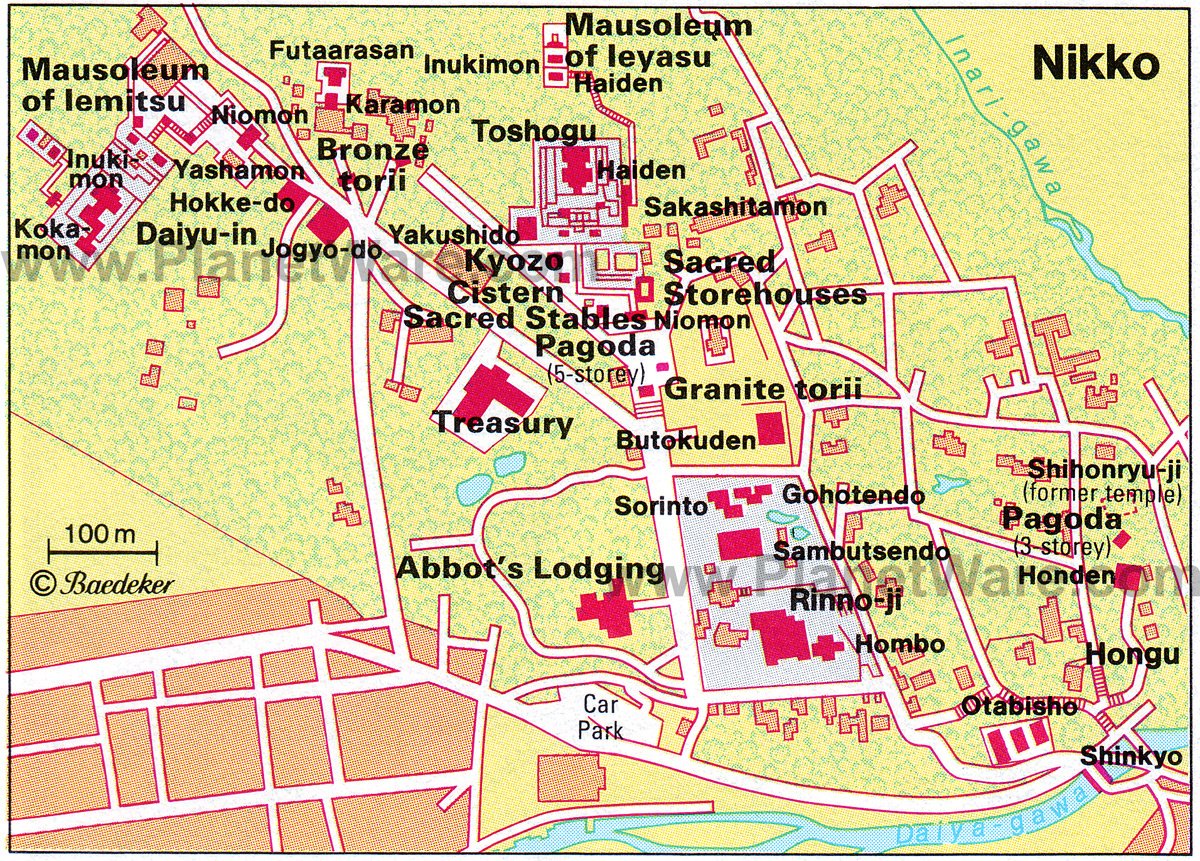


| 1617 - Tosho-gu Shrine, Nikko, Tochigi Prefecrure (Japan).
 Grounds include famous three monkeys frieze (right image) and huge temple bell. Rinno-ji temple (766) and the Shinkyo / Sacred Bridge are nearby. Grounds include famous three monkeys frieze (right image) and huge temple bell. Rinno-ji temple (766) and the Shinkyo / Sacred Bridge are nearby.
|

| 1644 - "Bell of Time / Toki no kane," Kawagoe, Saitama Prefecture (Japan).  "A bell tower originally built by the order of Sakai Tadakatsu between 1624 and 1644. The present structure goes back to 1894, a year after the Great Fire of Kawagoe. It is a three-story tower measuring 16 meters in height. The tower has been telling time to the city's residents for 350 years and has been deemed as a symbol of the city. Currently, the bell can be heard four times a day (6 a.m., 12 p.m., 3 p.m., and 6 p.m.)." "A bell tower originally built by the order of Sakai Tadakatsu between 1624 and 1644. The present structure goes back to 1894, a year after the Great Fire of Kawagoe. It is a three-story tower measuring 16 meters in height. The tower has been telling time to the city's residents for 350 years and has been deemed as a symbol of the city. Currently, the bell can be heard four times a day (6 a.m., 12 p.m., 3 p.m., and 6 p.m.)."
|



| 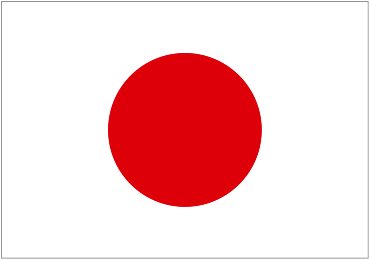 1993 - Peace Museum of Saitama, Monomiyama Park, 241-113 Iwadono,
Higashi Matsuyama, Saitama Prefecture (Japan). 1993 - Peace Museum of Saitama, Monomiyama Park, 241-113 Iwadono,
Higashi Matsuyama, Saitama Prefecture (Japan).  "The museum illustrates the tragedy of the war and the importance of peace though the exhibition and movies. Curators are ready to offer further information. On a clear day you can see Mt. Fuji and other distant mountains from the observatory of the 41.5 meters tower." Near Daito Bunka University (Higashi Matsuyama Campus). One of 9 Japanese institutions described in brochure for 6th International Conference of the INMP in 2008. "The museum illustrates the tragedy of the war and the importance of peace though the exhibition and movies. Curators are ready to offer further information. On a clear day you can see Mt. Fuji and other distant mountains from the observatory of the 41.5 meters tower." Near Daito Bunka University (Higashi Matsuyama Campus). One of 9 Japanese institutions described in brochure for 6th International Conference of the INMP in 2008.
|
  

|  October 9, 2000 - John Lennon Museum, Saitama Super Arena (4th & 5th floors), 8 Saitama Shintoshin / Saitama New Urban Center, Chuo-ku, Saitama-city, Saitama Prefecture (Japan). October 9, 2000 - John Lennon Museum, Saitama Super Arena (4th & 5th floors), 8 Saitama Shintoshin / Saitama New Urban Center, Chuo-ku, Saitama-city, Saitama Prefecture (Japan).  "Opened on the 60th anniversary of John Lennon’s birth. Approved formally by Ms. Yoko Ono, it is the first museum of its kind anywhere in the world." "Opened on the 60th anniversary of John Lennon’s birth. Approved formally by Ms. Yoko Ono, it is the first museum of its kind anywhere in the world."
|


 |  November 2006 - Chukiren Heiwakinenkan / Chukiren Peace Memorial Museum, Kawagoe, Saitama Prefecture (Japan). November 2006 - Chukiren Heiwakinenkan / Chukiren Peace Memorial Museum, Kawagoe, Saitama Prefecture (Japan).  "The core of the museum’s collection, housed in a 180-sq meter warehouse, is the testimony of 300 Japanese veterans who confessed while in custody in China to committing atrocities there, including rape, torture and infanticide. Graphic video and photographic evidence showing some of the most brutal crimes of the Imperial Japanese Army is held in the archives as a resource for scholars." Member of International Network of Museums for Peace (INMP). "The core of the museum’s collection, housed in a 180-sq meter warehouse, is the testimony of 300 Japanese veterans who confessed while in custody in China to committing atrocities there, including rape, torture and infanticide. Graphic video and photographic evidence showing some of the most brutal crimes of the Imperial Japanese Army is held in the archives as a resource for scholars." Member of International Network of Museums for Peace (INMP).
|
Comments: From Narita International Airport, we took the JR "loop" train 3/4 of the way around the city of Tokyo to the distant northern suburb of Omiya, where we encountered a minor problem which plagued us at another dozen or more Japanese railroad stations: Not knowing which of two sides of the station to exit inorder to when we wanted to go.
Omiya -- we had decided back in the USA -- would be a base from which we could venture to Nikko at to Saitama.
Our side trip to the Nikko temple complex went smoothly. Nikko has two railroad stations for two different railroad companies. The JR station was designed by Frank Lloyd Wright.
As a prefecture, Saitama covers a large area, but part is a city of the same name. In any event, we found the geography very confusing. We hoped to leave Omiya by local train, change trains in Kawagoe, visit the Peace Museum of Saitama (in a place called Higashi Matsuyama), then somehow find a lift over to the Maruki Gallery, then go to a nearby railway station, and take the Bullet Train (Shinkansen) to Nagano. No way! The station master at a small town railroad station put us (and our three suitcases -- which were too large to stow in the station's coin operated lockers) on a local bus, and the bus driver deposited us at a deserted intersection in a forest. (We'd just passed through a university campus, but there was absolutely no one in sight at the intersection.) Guided by a single highway sign, we trudged with our luggage in a light rain a couple of miles uphill and finally came in sight of the huge museum and its tower. We were wet and completely tired out. A parking lot attendant was the first person we'd seen in nearly an hour, but he was no help. A car arrived, and its driver and I climbed two or three hundred meters to the museum itself, and no less than four employees helped me phone for a taxi using my pocket change. They never asked why two foreigners arrived on foot in the rain with three suitcases and then immediately wanted to leave.
We took two trains back to Kawagoe and Omiya and then embarked for Nagano on the Shinkansen. So we never really visited either musuem. (And I never lerned why Saitama has such a large peace museum -- or if it was based on WW-II suffering, as are museums in Hiroshima, Nagasaki, Osaka, Tokyo, and Kawasaki.) We didn't learn about the John Lennon Museum and the Chukiren Peace Memorial Museum until later. Although we changed trains twice in Kawagoe, we made no effort to see the Bell of Time, but it's nice to know about it as a fixed point in the long tradition of Japanese bells (both religious and civic) which so richly bestowed peace bells to the world after World War II.
Nagano, Nagano Prefecture
(See Japan, Bells.)
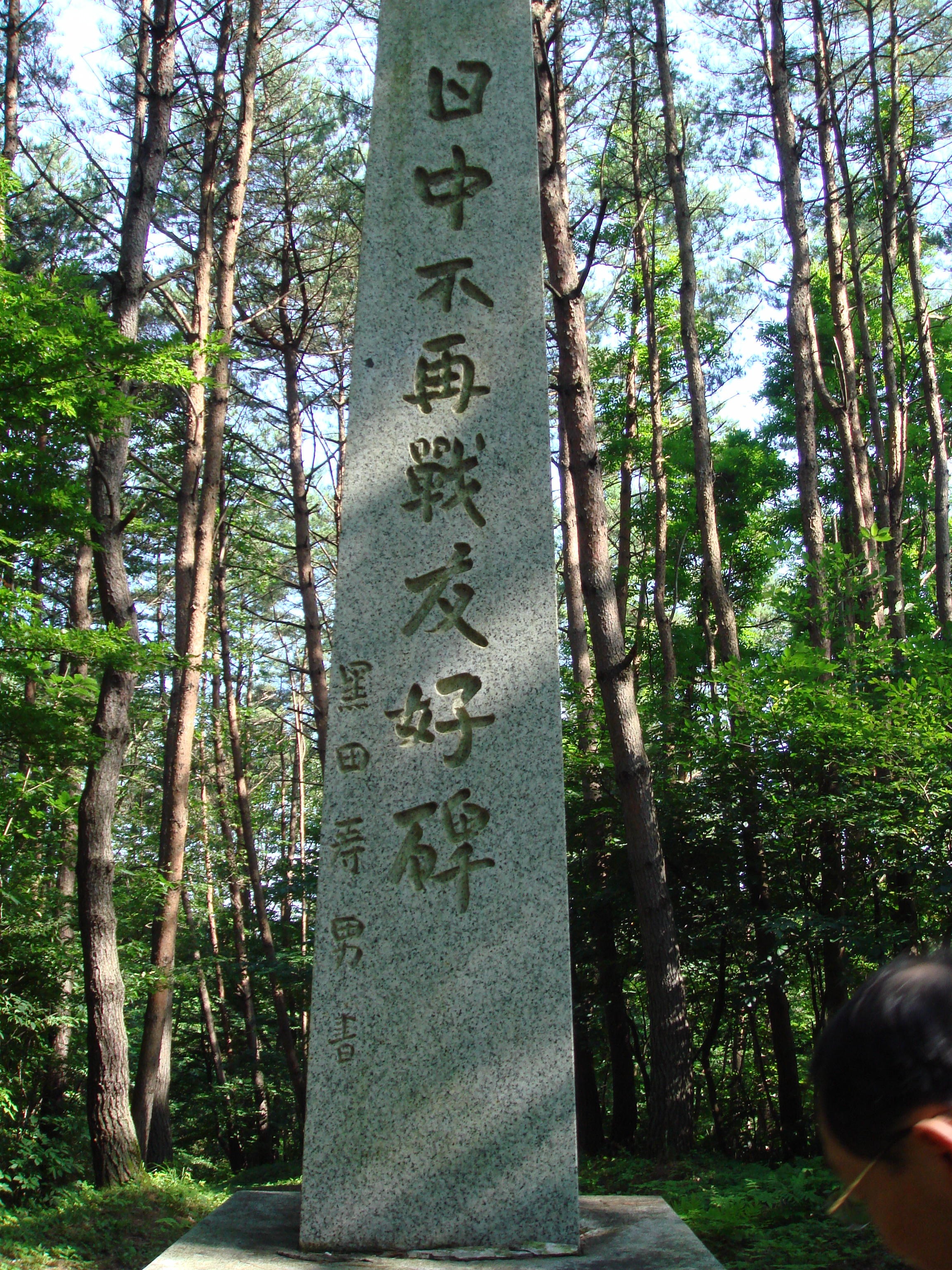

|  1966 - Monument to Eternal Peace Between Japan & China, Hanaoka, Nagano Prefecture (Japan). 1966 - Monument to Eternal Peace Between Japan & China, Hanaoka, Nagano Prefecture (Japan).  "In the 1950s, the Japan-China Friendship Association (Nit-Chu Yuko Kyokai) excavated remains of the forced laborers who died in Hanaoka, sent them to the People’s Republic of China, and built a monument to remember the victims and atone for the atrocity." "In the 1950s, the Japan-China Friendship Association (Nit-Chu Yuko Kyokai) excavated remains of the forced laborers who died in Hanaoka, sent them to the People’s Republic of China, and built a monument to remember the victims and atone for the atrocity." 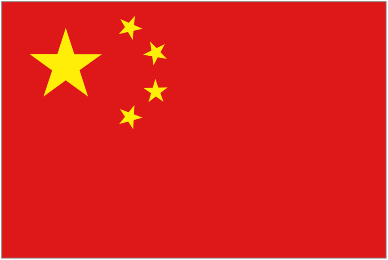
|
 
|  7th Century - Zenko-ji Temple, Nagano (Japan). 7th Century - Zenko-ji Temple, Nagano (Japan).  Decorated with banners bearing the imperial crecanthum (spelling?). Decorated with banners bearing the imperial crecanthum (spelling?).
|
Comments: We spent most of a day visiting Zenko-ji Temple, saw the temple bell (which rang via remote hook-up to open the Winter Olympics in 1998), and also saw a very unusual small bell atop a tall, shinny steel tower. We enjoyed visiting the many food and souvenir shops which line the long pedestrian avenue leading from the city up to the temple.
Learning a lesson from our experience the day before, Schera proposed that we try to make arrangements before landing unnounced in Takahoka. So we threw ourselves on the mercy of the tourist informtion bureau in the Nagano railroad station, and a very helpful young lady phoned on our behalf to Takahoka city hall. After two nights in Nagano, we enjoyed a very pleasant -- and slow -- rail journey through rural countryside and forests to the rail junction at Jyoetsu on the Sea of Japan and then a relatively fast run through Toyama to Takaoka.
Takaoka, Toyama Prefecture.
(See Japan, Bells.)
 


|  About 1700 - Takaoka Tojo Park, Takaoka, Toyama Prefecture (Japan). About 1700 - Takaoka Tojo Park, Takaoka, Toyama Prefecture (Japan).  Takaoka Castle is destroyed, but its moats remain as an extentive system of lakes and as a waterfowl refuge. The park hosts the annual Manyo Festival, which includes a complete recitation of the Manyo poem (Manyoshu) involving 2,200 people successively reciting all 4,516 of its individual poems (right image). Takaoka Castle is destroyed, but its moats remain as an extentive system of lakes and as a waterfowl refuge. The park hosts the annual Manyo Festival, which includes a complete recitation of the Manyo poem (Manyoshu) involving 2,200 people successively reciting all 4,516 of its individual poems (right image).
|
 
|  1933 - Buddhist Statue / Daibutsu, 11-29 Otemachi, Takaoka, Toyama Prefecture (Japan). 1933 - Buddhist Statue / Daibutsu, 11-29 Otemachi, Takaoka, Toyama Prefecture (Japan).  "Constructed in 1745 but was often in the damage of a fire. Since Takaoka city has been is [sic] famous for manifucture [sic] of copper utensil, this current buddha statue made by bronze in 1933 is the symbol of Takaoka city. It might be selected as one of three major buddha statue in Japan, but Gifu Buddha statue is also said to be one ot those.
Total Height : 15.85m." Strings of metalic peace cranes are on display behind the statue. "Constructed in 1745 but was often in the damage of a fire. Since Takaoka city has been is [sic] famous for manifucture [sic] of copper utensil, this current buddha statue made by bronze in 1933 is the symbol of Takaoka city. It might be selected as one of three major buddha statue in Japan, but Gifu Buddha statue is also said to be one ot those.
Total Height : 15.85m." Strings of metalic peace cranes are on display behind the statue.
|
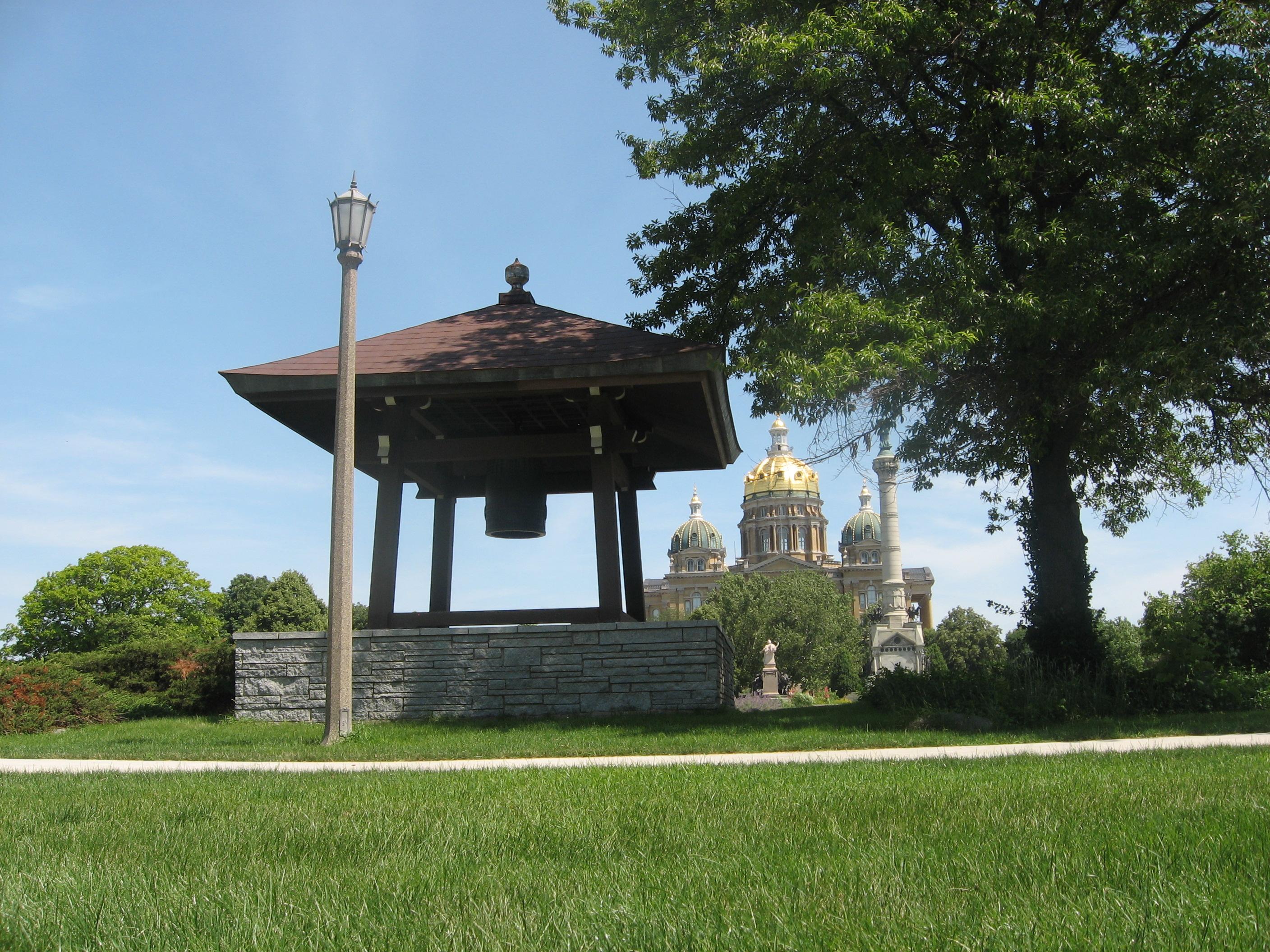 | 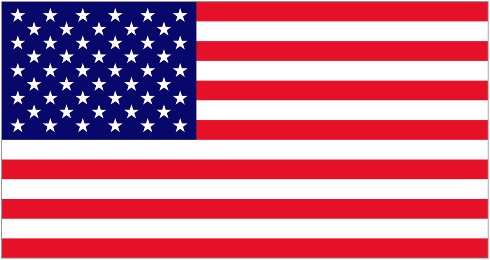  1961 - "Japanese temple bell of peace and friendship," just west of the Iowa Judicial Building on the south side of Court Avenue, State Capitol grounds, Des Moines, Iowa, USA. Gift from Prefecture of Yamanashi (Japan) to the State of Iowa in gratitude for agricultural relief in 1959. Cast by Oigo Bell Works, Takaoka, Toyama Prefecture (Japan). Photo by EWL. 1961 - "Japanese temple bell of peace and friendship," just west of the Iowa Judicial Building on the south side of Court Avenue, State Capitol grounds, Des Moines, Iowa, USA. Gift from Prefecture of Yamanashi (Japan) to the State of Iowa in gratitude for agricultural relief in 1959. Cast by Oigo Bell Works, Takaoka, Toyama Prefecture (Japan). Photo by EWL. 
|
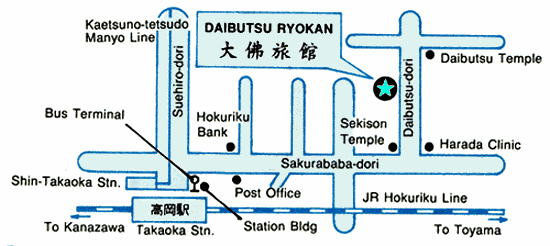 
|  Date? - Bell Store, Suehiro-dori, Takaoka, Toyama Prefecture (Japan). Date? - Bell Store, Suehiro-dori, Takaoka, Toyama Prefecture (Japan).  Across public square from Takaoka railroad station. Across public square from Takaoka railroad station.
|
  

|  Future - Three World Peace Bells outside building in which they were cast at
Oigo Bell Works, Takaoka, Toyama Prefecture (Japan). Future - Three World Peace Bells outside building in which they were cast at
Oigo Bell Works, Takaoka, Toyama Prefecture (Japan).  Last three bells cast for the World Peace Bell Association (WPBA) of Tokyo (Japan). Photo by EWL taken October 3, 2008. Last three bells cast for the World Peace Bell Association (WPBA) of Tokyo (Japan). Photo by EWL taken October 3, 2008.
|
Comments: Takaoka is reputed to be a city of metal working and metal craftsmen. We wanted to visit Oigo Bell Works because we'd learned that it cast the famous Peace Bell for the Niroshima Peace Memorial Park in 1964. (The Oigo foundry also cast the 1984 Ohara bell for Duluth, Minnesota, and I'd also determined that it had cast the 1961 Yamanashi bell for the State of Iowa by standing inside the bell, photographing its inscription, and asking Shigeko for an interpretation.) Thanks to arrangements made the day before, we were met on arrival by Japanese-speaking Britisher Jonathan Perry who was in Takaoka to teach English and work part-time at Takaoka city hall. He'd never previously heard of Oigo Bell Works but had phoned ahead for an appointment and cheerfully led us there by taxi.
Oigo company offices surround a large showroom, in the center of which is a model of the 1964 Hiroshima Peace Bell. Oigo also cast the smaller 1967 bell for Hiroshima. When I asked about World Peace Bells, the manager led us immediately outdoors and showed us three identical balls each with "World Peace Bell" cast in English in their sides. Yes, Oigo has cast all of the WPB's for World Peace Bell Association in Tokyo (see below). The last three are still at the foundry because WPBA has not yet paid for them.
As we drove back to the city, Jonathan extoled the virtures of Takaoka's famous Buddhist Statue (Daibutsu) and offered to take us there. This proved to be a kind of peace monument because of a cache of metallic peace cranes in the semi-underground room which is both under and behind the huge statue. Jonathan also suggested that we go to Takaoka Tojo Park at dusk to see him and a half dozen other Japanese-speaking foreigners take part in the annual three-day recital of an ancient Japanese poem. Thus we walked furhter that day than we ever intended to walk, but seeing the costumed pagent and the somber park (grounds and moats of the former castle) was worth it.
Jonathan also suggested a nice litle restaurant on a back street which we would never have found otherwise -- across the lane from a brothel of some kind. After dinner we discovered a retail shop near the railroad station which sells bells and other Takaoka metal work. We bounght three small bells, including one for Peter van den Dungen in Kyoto and one for Steve Leeper in Hiroshima.
Kanazawa & Hikone
(See Japan, Bells.)
Comments: After Takahoka, we had to change trains in Kanazawa which has very fancy modern railroad station. We took a circular bus ride around the central city and saw department stores and another castle, but the most interesting sights were our fellow passengers, Japanese in a holiday mood who jumpted frequently on and off the bus.
By Saturday evening we reached Hikone on Lake Biwa (the largest lake in Japan) to prepare for our arrival at the INMP conference in Kyoto the following day. We read all of the tourist literature for Hikone but could not find very much to do except walk to the castle -- which we could see on a conical hill about mile from our hotel room window. The walk strenuous but interesting, and the castle very well preserved. We also walked the length of the Yume-Kyobashi shopping street, but its merchandise was high-end, and the shops were not as numerous or as much fun as in Nagano. We were disappointed not to find a conveneient way to attain the shore of the lake, but we saw it in the distance from the top of the castle hill. Maybe we were prejudiced by the fact that it was sunny in Nagano and rainy in Hikone.
Kyoto, Kyoto Prefecture
(See Japan, Museums for Peace, Bells, Sculpture, Artists, INMP.)



|   1893 - Japanese Pavilion, World's Columbian Exposition (Chicago World's Fair), Chicago, Illinois (USA). "A replica of the Phoenix Hall (Hodo), which is the only surviving building of Fujiwara Michinaga's palace [at Uji, near Kyoto], which was converted to a temple, Byodo-in, in 1052." Site is now Osaka Garden (right image), and one stone lantern remains from the 1893 exposition. A permanent replica was constructed about 1970 in the Valley of the Temples, Oahu Island, Hawaii (qv). 1893 - Japanese Pavilion, World's Columbian Exposition (Chicago World's Fair), Chicago, Illinois (USA). "A replica of the Phoenix Hall (Hodo), which is the only surviving building of Fujiwara Michinaga's palace [at Uji, near Kyoto], which was converted to a temple, Byodo-in, in 1052." Site is now Osaka Garden (right image), and one stone lantern remains from the 1893 exposition. A permanent replica was constructed about 1970 in the Valley of the Temples, Oahu Island, Hawaii (qv). 
|




|   About 1970 - Peace Bell, Byodo-In Temple, Valley of the Temples, Oahu Island, Hawaii (USA). Temple completed June 7, 1968, & is a replica of Byodo-in Temple which was originally built in 998 in the city of Uji, Kyoto Prefecture (Japan). Another replica served as Japan's official exhibit at the World's Columbian Exposition in Chicago in 1893. About 1970 - Peace Bell, Byodo-In Temple, Valley of the Temples, Oahu Island, Hawaii (USA). Temple completed June 7, 1968, & is a replica of Byodo-in Temple which was originally built in 998 in the city of Uji, Kyoto Prefecture (Japan). Another replica served as Japan's official exhibit at the World's Columbian Exposition in Chicago in 1893. 
|

|  1977 - Kyoto University of Art & Design, 2-116 Uryuzan, Kitashirakawa, Sakyo-ku, Kyoto (Japan). 1977 - Kyoto University of Art & Design, 2-116 Uryuzan, Kitashirakawa, Sakyo-ku, Kyoto (Japan).  "One of the largest art universities in Japan with 10,000 students enrolled... Has 'Peace Building by Art' as the academic philosophy." One of 3 institutions hosting 6th International Conference of the International Network of Museums for Peace (INMP) in October 2008. One of 9 Japanese institutions described in brochure for 6th International Conference of the INMP in 2008. "One of the largest art universities in Japan with 10,000 students enrolled... Has 'Peace Building by Art' as the academic philosophy." One of 3 institutions hosting 6th International Conference of the International Network of Museums for Peace (INMP) in October 2008. One of 9 Japanese institutions described in brochure for 6th International Conference of the INMP in 2008.
|

|  Date? - Wadatsumi-zo, Stairway, Kyoto Musuem for World Peace, Kyoto (Japan). Date? - Wadatsumi-zo, Stairway, Kyoto Musuem for World Peace, Kyoto (Japan).  "The centerpiece of the museum's art collection. Created by Shin Hongo [1905-1980] to depict the 'Sighs, Anger and Pain' of college students drafted into the armed forces during the student mobilization of October 1943." "The centerpiece of the museum's art collection. Created by Shin Hongo [1905-1980] to depict the 'Sighs, Anger and Pain' of college students drafted into the armed forces during the student mobilization of October 1943."
|

|  2005 - Mutchan Peace Sculpture, First Floor Lounge, Kyoto Musuem for World Peace, Kyoto (Japan). 2005 - Mutchan Peace Sculpture, First Floor Lounge, Kyoto Musuem for World Peace, Kyoto (Japan).  "Mutchan was a young girl who starved to death in an air-raid shelter where she had been quarantined because she had tuberculosis. A newspaper article about her death evoked a huge response. Funds poured in for Heijin Murakami to make the sculpture and place [the original] in a park in Oita City." "Mutchan was a young girl who starved to death in an air-raid shelter where she had been quarantined because she had tuberculosis. A newspaper article about her death evoked a huge response. Funds poured in for Heijin Murakami to make the sculpture and place [the original] in a park in Oita City."
|

|  May 2003 - International Children's Peace Sculpture, Kyoto Musuem for World Peace, Kyoto (Japan). May 2003 - International Children's Peace Sculpture, Kyoto Musuem for World Peace, Kyoto (Japan).  Model of a sculpture made by Kyoto HS students after "Travis, a junior HS student from New Mexico," said at a peace seminar in Hiroshima that he'd like to see such sculptures erected all over the world. Man in photo is Prof. Ikuro Anzai, founding director of the museum. Model of a sculpture made by Kyoto HS students after "Travis, a junior HS student from New Mexico," said at a peace seminar in Hiroshima that he'd like to see such sculptures erected all over the world. Man in photo is Prof. Ikuro Anzai, founding director of the museum.
|



|  Date? - "Firebird--Past and Present," First Floor Lounge, Kyoto Museum for World Peace, Kyoto (Japan). Date? - "Firebird--Past and Present," First Floor Lounge, Kyoto Museum for World Peace, Kyoto (Japan).  "Two figures from the anime series Hi no Tori / Firebird (or Phoenix) by Osamu Tezuka [1928-1989], Japan's most famous cartoonist. The Firebird series was Tezuka's means of expressing the horror of war and his strong desire for peace. Thus, we feel his Phoenix is a fitting symbol for the Museum's strong yearning to learn from the terrible lessons of war." "Two figures from the anime series Hi no Tori / Firebird (or Phoenix) by Osamu Tezuka [1928-1989], Japan's most famous cartoonist. The Firebird series was Tezuka's means of expressing the horror of war and his strong desire for peace. Thus, we feel his Phoenix is a fitting symbol for the Museum's strong yearning to learn from the terrible lessons of war."
|
Comments: We slept five nights in Kyoto in a first class hotel (the rate subsidized as part of our conference registration). All conference sessions were a bus ride away -- the first three days at Ritsumeikan University and the fourth day at the Kyoto University of Art & Design. Click here to see the text of the PowerPoint presentation I made on the first day of the conference. Lots of good papers were read, and conference participants learned a lot from each other. As at any conference, the best part was mixing with other participants. We met museum directors and others from Canada, Czech Republic, China, Guam, India, Italy, Japan, Kampuchea, Korea, Netherlands, New Zealand, Pakistan, Spain, Sweden, USA, Uzbekistan, and Vietnam. According to conference organizers, Japanese law prevented them from ever issuing a list of confernce participants. Also unfortunatelyly, neither the International Network of Museums for Peace (INMP) nor any of the Japanese host institutions has posted anything about the conference on their websites. Click here for a little information on this website. It's not much, but it's more than you can find anywhere else.
On the afternoon of the fourth day, we and Shigeko Uppuluri taxied to the offices and foundry of Iwasawa no Bonsho Co., Ltd. to see where the Oak Ridge International Friendship Bell had been cast in 1993 (as well as the Saporro Bell in Portland, Oregon, and the Buddhist Church Bell in Gardena, California).
Schera and I tried for three days to find a place (other than the hotel) to do our laundry. Our final "discovery" was a tiny hole-in-the-wall near the downtown newspaper building. It had only two washing machines, and each looked like the cockpit of a 747 jet airplane. A digital readout counted down exactly 60 minutes, and, in this time, the machine added detergent, then washed and dried out clothes. It didn't fold them however.
Hiroshima, Hiroshima Prefecture
(See Hiroshima, Japan, Hiroshima Elsewhere, Peace Parks, Museums for Peace, Bells, Sculpture, Quakers, Sadako.)
 |  1949 - Bell of Peace, Tamon-in Temple, near Hijiyama Park (just east of Kyobashi-gawa River), Hiroshima (Japan). 1949 - Bell of Peace, Tamon-in Temple, near Hijiyama Park (just east of Kyobashi-gawa River), Hiroshima (Japan).  Original bell was taken by military during World War II. Empty bell tower was among very few wooden structures to survive A-bomb on August 6, 1945. Replacement "Bell of Peace" installed in 1949 is first Japanese peace bell? Image is from "A-bombed Structures Speak -- The First Special Exhibition of Fy 2008," Hiroshima Peace Memorial Museum. It shows the 1949 bell hanging under a beam cracked by the A-bomb blast. Original bell was taken by military during World War II. Empty bell tower was among very few wooden structures to survive A-bomb on August 6, 1945. Replacement "Bell of Peace" installed in 1949 is first Japanese peace bell? Image is from "A-bombed Structures Speak -- The First Special Exhibition of Fy 2008," Hiroshima Peace Memorial Museum. It shows the 1949 bell hanging under a beam cracked by the A-bomb blast.
|




|  1950 - "The Bell of Banzai for Absolute Peace," Taihei Temple, Uwajima, Ehime, Shikoku Island (Japan). 1950 - "The Bell of Banzai for Absolute Peace," Taihei Temple, Uwajima, Ehime, Shikoku Island (Japan).  Replaced temple bell seized by military during World War II. Cast (including coins from 26 countries) by Chiyoji Nakagawa [1905-1972], mayor of Uwajima 1959-1967 and 1971-1972. Original peace bell and model for Japanese Peace Bell at the United Nations. Right image is miniature of the real bell. Replaced temple bell seized by military during World War II. Cast (including coins from 26 countries) by Chiyoji Nakagawa [1905-1972], mayor of Uwajima 1959-1967 and 1971-1972. Original peace bell and model for Japanese Peace Bell at the United Nations. Right image is miniature of the real bell.
|

|  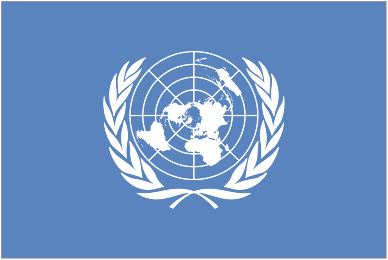 June 8, 1954 - Japanese Peace Bell, West Court Garden, Secretariat Building, United Nations (UN), New York City, New York (USA). Cast (including coins & metal from about 60 UN member countries) by Chiyoji Nakagawa [1905-1972] on October 24, 1952, at "the Tada Factory" (Japan). Gift to the UN from the UN Assn. of Japan. Rung on the Vernal Equinox and on 21 September to coincide with the opening of the UN General Assembly and the International Day of Peace. Click here for Wikipedia article. Entry #756 in the "Peace Movement Directory" by James Richard Bennett (2001). Click here for Japanese website about the bell. June 8, 1954 - Japanese Peace Bell, West Court Garden, Secretariat Building, United Nations (UN), New York City, New York (USA). Cast (including coins & metal from about 60 UN member countries) by Chiyoji Nakagawa [1905-1972] on October 24, 1952, at "the Tada Factory" (Japan). Gift to the UN from the UN Assn. of Japan. Rung on the Vernal Equinox and on 21 September to coincide with the opening of the UN General Assembly and the International Day of Peace. Click here for Wikipedia article. Entry #756 in the "Peace Movement Directory" by James Richard Bennett (2001). Click here for Japanese website about the bell.
|

 
 |  September 20, 1964 - Hiroshima Peace Bell, Peace Memorial Park, Hiroshima (Japan). September 20, 1964 - Hiroshima Peace Bell, Peace Memorial Park, Hiroshima (Japan).  Large bell, permanently outdoors. Surface of the bell is a map of the world. Its "sweet spot" is an atomic symbol. Designed by Masahiko Katori [1899-1988]. Cast by Oigo Bell Works, Takaoka, Toyama Prefecture (Japan). #08 of 56 "cenotaphs & monuments" on the Virtual E-Tour. Middle image shows Ram Uppuluri of Oak Ridge, Tennessee, at the bell on July 15, 1993. Middle image by Herman Postma. Large bell, permanently outdoors. Surface of the bell is a map of the world. Its "sweet spot" is an atomic symbol. Designed by Masahiko Katori [1899-1988]. Cast by Oigo Bell Works, Takaoka, Toyama Prefecture (Japan). #08 of 56 "cenotaphs & monuments" on the Virtual E-Tour. Middle image shows Ram Uppuluri of Oak Ridge, Tennessee, at the bell on July 15, 1993. Middle image by Herman Postma.
|

 |  August 6, 1965 - World Friendship Center (WFC), 8-10 Higashi Kan-on, Nishi-ku, Hiroshima (Japan). August 6, 1965 - World Friendship Center (WFC), 8-10 Higashi Kan-on, Nishi-ku, Hiroshima (Japan).  Founded on 20th anniversary of the bomb by American Barbara Leonard Reynolds [1915-1990] who also founded the Peace Resources Center (PRC) at Wilmington College of Ohio (USA) in 1975. "Not only a 'home away from home' for travelers to Hiroshima, it is a place where local Hiroshima residents volunteer their hospitality of peace in a variety of activities." Supported by Brethren Volunteer Service (BVS) & by the American Committee of the WFC, currently chaired by Mary Ann Albert of Warsaw, Indiana (USA). Founded on 20th anniversary of the bomb by American Barbara Leonard Reynolds [1915-1990] who also founded the Peace Resources Center (PRC) at Wilmington College of Ohio (USA) in 1975. "Not only a 'home away from home' for travelers to Hiroshima, it is a place where local Hiroshima residents volunteer their hospitality of peace in a variety of activities." Supported by Brethren Volunteer Service (BVS) & by the American Committee of the WFC, currently chaired by Mary Ann Albert of Warsaw, Indiana (USA). 
|

 |  1966 - Peace Pagoda, on hill north of railway station, Hiroshima (Japan). 1966 - Peace Pagoda, on hill north of railway station, Hiroshima (Japan).  Nipponzan Myohoji Buddhist Order. Commemorates lives lost in the A-bomb blast, and contains gifts of Buddha's ashes from the then Prime Minister of India and from Mongolian Buddhists. Visited by RH. Nipponzan Myohoji Buddhist Order. Commemorates lives lost in the A-bomb blast, and contains gifts of Buddha's ashes from the then Prime Minister of India and from Mongolian Buddhists. Visited by RH.
|



|  1967 - Hiroshima Peace Bell, Peace Memorial Museum (East Building), Hiroshima (Japan). 1967 - Hiroshima Peace Bell, Peace Memorial Museum (East Building), Hiroshima (Japan).  Small bell, displayed indoors (left image), and rung outdoors (right image) during the annual Peace Memorial Ceremony on August 6 (Hiroshima Day). Designed by Masahiko Katori [1899-1988]. Has calligraphy by Shigeru Yoshida [1878-1967], former prime minister of Japan. Cast by Oigo Bell Works, Takaoka, Toyama Prefecture (Japan). Left image by Satoko Nishizawa (Hiroshima Boys Choir). Small bell, displayed indoors (left image), and rung outdoors (right image) during the annual Peace Memorial Ceremony on August 6 (Hiroshima Day). Designed by Masahiko Katori [1899-1988]. Has calligraphy by Shigeru Yoshida [1878-1967], former prime minister of Japan. Cast by Oigo Bell Works, Takaoka, Toyama Prefecture (Japan). Left image by Satoko Nishizawa (Hiroshima Boys Choir).
|
Comments: On Friday morning, all conference participants (or at least all from outside Japan) took the same Sinkansen from Kyoto to Hiroshima, and two chartered buses deposited us directly into Peace Memorial Park. The park is the world capital of peace monuments, but only a selected few are shown above. (Click here for my complete Hiroshima webpage.)
On Friday afernoon -- the last day of the conference -- I stretched my legs and happened to come across two temporary exhibits in the basement of the Peace Memorial Museum -- new acquisitions and an exhibition of pre-war trees and buildings (or parts of buildings) which still exist in Hiroshima. The forner exhibit reminded me of the need to create a display of Hiroshima's direct peace connection to Oak Ridge, Tennessee (via the peace bells in both cities). The latter exhibit extended our understanding of early Japanese peace bells back at least to 1949 (see above).
We met with Steve Leeper in his office on Saturday morning. That afternoon we gave ourselves a private tour of the many peace monumnts including Carla Halter's Gates of Peace and the 1949 peace bell. On Saturday evening I had dinner with Peter van den Dungen from Bradford (England) and with Gerard Lössbroek from Bergeijk (The Netherlands). Gerard is pictured above viewing what may be the oldest monument in Hiroshima -- the so-called "E=MC squared" monument erected at Hiroshima Municipal Girls High School in 1948.
When we departed our hotel on Sunday morning, we asked our cab driver to drive us past the
Nipponzan Myohoji peace pagoda which towers above the Hiroshima railroad station. He started driving up the hill but soon got hemmed in by a residential neighborhood. Schera and I were entertained by the puzzled looks of many residents who -- in response to our driver's pleas -- pointed up and tried to explain something to the driver, but he never found a way to the pagoda, and we later learned (from Ralph Hutchison) that the only road access is from the other side of the hill. While in Hiroshima, we also never encountered Barbara Reynolds' World Friendship Center (WFC) and only learned about it when we visited her Peace Resources Center (PRC) in Wilmingon, Ohio, in July 2009.
Osaka, Osaka Prefecturea
(See Japan, Museums for Peace, Bells, Children.)

|  1912 - Billiken, Shinsekai District, Tennoji, Osaka (Japan). 1912 - Billiken, Shinsekai District, Tennoji, Osaka (Japan).  "The God of Things As They Ought to Be." "The God of Things As They Ought to Be."
|
 |  1970 Tower for World Peace, Church of Perfect Liberty (PL), Osaka (Japan). 1970 Tower for World Peace, Church of Perfect Liberty (PL), Osaka (Japan).  "Reaching to 180 metres (590 feet) in height,..the symbol and quintessence of the most sophisticated contemporary technology (sprayed concrete). It can be seen as far away as Kobe City. The unique shape, originally designed in clay by PL's late Second Founder. It's unique pointing finger-like shape symbolizes the Second Founder's revelation that 'the truth is one'– an understanding that's basic to realizing the desire for the eternal peace and welfare of humankind." "Reaching to 180 metres (590 feet) in height,..the symbol and quintessence of the most sophisticated contemporary technology (sprayed concrete). It can be seen as far away as Kobe City. The unique shape, originally designed in clay by PL's late Second Founder. It's unique pointing finger-like shape symbolizes the Second Founder's revelation that 'the truth is one'– an understanding that's basic to realizing the desire for the eternal peace and welfare of humankind."
|

|  1998 -
3rd International Conference of the International Network of Museums for Peace (INMP) in Osaka and Kyoto (Japan). Arranged by a number of Japanese museums. Theme: "The contribution of museums to world peace." 1998 -
3rd International Conference of the International Network of Museums for Peace (INMP) in Osaka and Kyoto (Japan). Arranged by a number of Japanese museums. Theme: "The contribution of museums to world peace."
|




|  1998 - Bell of Peace ("Hirarillon"), Okahigashi Cho Park, Hirakata?, Osaka (Japan). 1998 - Bell of Peace ("Hirarillon"), Okahigashi Cho Park, Hirakata?, Osaka (Japan).  Carillon (Western-style bells) and monument depicting the legend of separated lovers, the stars Vega and Altair (right image). Carillon (Western-style bells) and monument depicting the legend of separated lovers, the stars Vega and Altair (right image).
|




|  September 11, 2005 - World Peace Bell, Motohama Ryokuchi Park, Amagasaki, Hyougo Prefecture (Japan), near Osaka. September 11, 2005 - World Peace Bell, Motohama Ryokuchi Park, Amagasaki, Hyougo Prefecture (Japan), near Osaka.  Images courtesy of WPBA. Images courtesy of WPBA.
|
Comments: To lay over in in Osaka, we aimed for Tennoji on the south side of the city mainly because it seemed to be a good point from which to depart to Shirahama. But we guessed well. On Saturday evening we walked through a zoo and past an art museum to
Shinsekai which proved to be an entertainment district
with the Eifel-like Osaka Tower, many bright lights, pachinko parlors, restaurants, "Billiken" statues, and "Billiken" dolls for sale. We'd never encountered Billiken before but later learned that he is not only the darling
 of Osaka but also the mascot of St. Louis University in Missouri (USA).
of Osaka but also the mascot of St. Louis University in Missouri (USA).
We spent all day Sunday walking across the heart of Osaka. We started by riding a train half way around the city just to buy English language papers at the Imperial Hotel (in the modern OAP Plaza complex --- OAP means "Osaka Amenity Park"), then by walking along one of Osaka's many rivers where there were homeless people living under blue tarpaulins and a carp fishing club happily pulling huge fish out of the water (because it was one of only two Sundays durng the year when such fishing in permitted). We walked along the moats of Osaka Castle and visited the closed Osaka Prefectural Building. I searched for but failed to find an ancient Bell of the Hours said to be at the Prefectural Building. (The bell helps prove that not all old Japanese bells were religious and that at least some served the secular and civic purpose of time keeping. This would have helped refute the legal argument that the International Friendship bell in Oak Ridge, Tennessee, is a religious symbol simply because of his shape and place of origin.)
After walking miles, we turned up at our ultimate destination, a major peace museum, the Osaka International Peace Center, but it was closed. Of course it was Sunday. We should have known, I guess. Anyway, there remain things to see and learn on our next visit to Osaka. What I still want to learn is how and why a museum founded (like the Hiroshima Peace Memorial Museum) to preserve the memory of tragic aerial bombardment during WW-II could also incorporate exhibits about "international" peace.
Shirahama & Tanabe, Wakayama Prefecture


 |  About 1000 - Kumano Kodo (pilgrimage route), Wakayama Prefecture, Kii Peninsula (Japan). About 1000 - Kumano Kodo (pilgrimage route), Wakayama Prefecture, Kii Peninsula (Japan).  With Takijiri-Oji, plus at least one other oji, tea house, etc. Also a grove of large trees admired (and saved?) by Minakata Kumagusu [1867-1941]. With Takijiri-Oji, plus at least one other oji, tea house, etc. Also a grove of large trees admired (and saved?) by Minakata Kumagusu [1867-1941].
|
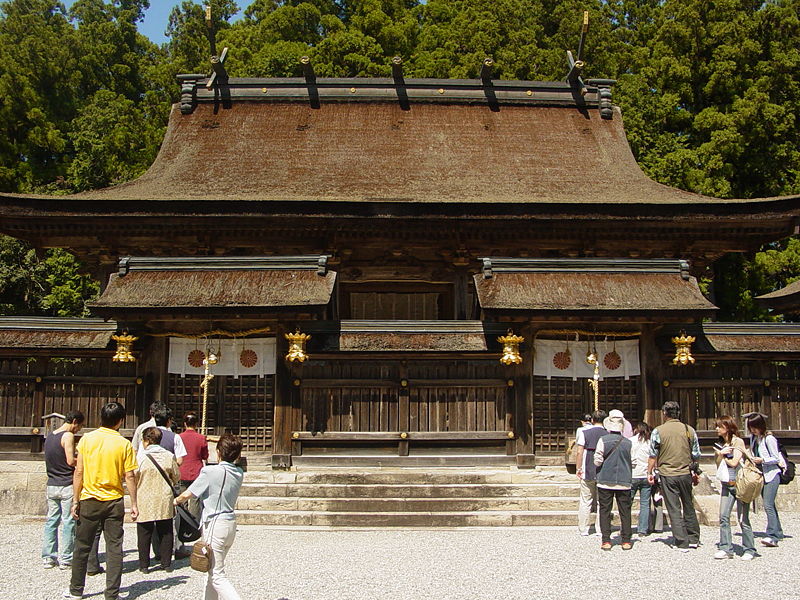
 |  1889 - Kumano Hongu-Taisha (Grand Shrine), Tanabe, Wakayama Prefecture, Kii Peninsula (Japan). 1889 - Kumano Hongu-Taisha (Grand Shrine), Tanabe, Wakayama Prefecture, Kii Peninsula (Japan).  Shinto shrine.
Part of the Kumano Sanzan in the UNESCO World Heritage site "Sacred Sites and Pilgrimage Routes in the Kii Mountain Range." Shinto shrine.
Part of the Kumano Sanzan in the UNESCO World Heritage site "Sacred Sites and Pilgrimage Routes in the Kii Mountain Range."
|



|  2002 - Hiroshima Flame Monument, Hoshino, Fukuoka Prefecture, Kyushu Island (Japan). 2002 - Hiroshima Flame Monument, Hoshino, Fukuoka Prefecture, Kyushu Island (Japan).  "Image shows
Takudou Yamamoto displaying a flame that has been burning continuously since the 1945 atomic bombing of Hiroshima, and was brought to the western Japanese village of Hoshino by his father Tatsuo, who kept it personally for more than two decades." "Image shows
Takudou Yamamoto displaying a flame that has been burning continuously since the 1945 atomic bombing of Hiroshima, and was brought to the western Japanese village of Hoshino by his father Tatsuo, who kept it personally for more than two decades."
|
Comments: After Osaka, we decided to bypass Nara, overriding Shigeko's strong recommendation. She'd fallen in love with Nara as a student in the 1940's, then taken her Indian husband there after they met and married at Indiana University. (Their familiarity with Nara helps explain why the first proposals for bringing a Japanese peace bell to East Tennessee also included stone lanterns and a deer park.) But our time was limited and -- having worn ourseves out walking miles to see the shrines at
Nikko -- we bypassed Nara in order to save time for other adventures.
In Shirahama, we saw hot springs, the Sandanpeki cliffs, Senjojiki rocks, the white sands of Shirahama Beach (said to have been imported from Australia), and (thanks to Shikego and her sister-in-law) a fish market second in size only to the central fish market in Tokyo. We visited Shigeko's mother, brother, and sister-in-law. Her brother is a journalist and told us about interviewing a group of priests who travel about Japan spreading the Hiroshima peace flame from Hoshino (Kyushu Island) and establishing it in permanet shrines all over the country. I knew of such flames in Tokyo (see below) and in New Zealand, but not multiple flames all over Japan, and I have not been able to find out anything more about this by searching the internet.
Shigeko booked us into a resort hotel. At our breakfast table was this charming note: "The guidance of breakfast. Good mornig. Last night, could it make itself at home slowly in the your room? A Viking comer is set up in adout the entrance. Take a favorite thing freely please. A total head cook Katsutoshi Ohno." Translation: "Serve yourself at the breakfast buffet near the entrance."
Shigeko also arranged for two young ladies to drive all three of us into the forested interior of the Kii Peninsula to see the ancient pilrimage route, which is where we discovered Minakata Kumagusu [1867-1941], who was one of the very first Japanese students in the USA (studied biology at MSU after being kicked out the University of Michigan) and then became a renowned environmentist -- the John Muir of Japan.
Shingu & Nagoya
![]()
 |  - Boys preparing for an upcoming festival, Shingu, ____ Prefecture (Japan). - Boys preparing for an upcoming festival, Shingu, ____ Prefecture (Japan).
|
![]()
 |  - Scene from JR Wide Body train between Shingu & Nagoya (Japan). - Scene from JR Wide Body train between Shingu & Nagoya (Japan).
|
![]()
 |  - Near railroad station, Nagoya, Nagoya Prefecture (Japan). - Near railroad station, Nagoya, Nagoya Prefecture (Japan).
|
Comments: From Shirahama, we took a JR local train to Shingu where I tried to exchange some dollars for yen. A bank teller carried my passport and travelers cheque away from her window, and she and two other bank employees huddled over them for ten minutes. Worried about missing our train and stranding Schera at the railroad station, I insisted on the return of my documents and fled the bank, leaving the employees to wonder what game I was pursung. For my part, I wondered why a small town bank (which had foreign exhange rates posted eletronically in its lobby) couldn't make a simple exchange transaction just as quickly as at the counters in airports. (Later -- in Kawasaki -- we had no problem exchanging dollars for yen.)
From Shingu, we took a JR Wide View (Diesel) train to Nagoya. The "Wide Body" was marvelous -- huge windows on both sides of the passenger cars but -- best of all -- access to a window directly behind the train driver in the lead car. I sat there enthralled as we passed slowly through fields and forests, along rocky shorelines, beside mountain streams, and into and out of small towns. The neatly uniformed and white gloved train driver never took his eyes off the line ahead. His left hand remained on the throttle, and his right hand pointed at and then saluted every upcoming signal. His every motion must have been recorded, but I never spotted the camera. The same scene was probably being duplicated at the front of every other train then moving somewhere in Japan, and I wondered if US railroads enforce the same discipline. Probably not.
We broke our journey in Nagoya for dinner (at a Korean BBQ restaurant where two white-shirted young Japanese men showed us how to cook our thin-sliced meat on the brazier) and a night's sleep. By now, we'd come to expect all Japanese city centers to be a concentration of modern skyscrapers, neon signs ten stories tall, US brand fast food, crowded sidewalks, and ubiquitous mass transit.
Yokohama & Kawasaki, Kanagawa Prefecture
(See Japan, Museums for Peace, Bells, Sculpture, Peace Parks.)

|  1983 - "Peace Boat" (SS Topaz), Yokohama (Japan). 1983 - "Peace Boat" (SS Topaz), Yokohama (Japan).  Has conducted 53 "Voyages for Peace" since 1983. Has conducted 53 "Voyages for Peace" since 1983.
|



|  1992 - Kawasaki Peace Museum, 1957-1 Kizuki Sumiyoshi-cho, Nakahara-ku, Kawasaki (Japan). 1992 - Kawasaki Peace Museum, 1957-1 Kizuki Sumiyoshi-cho, Nakahara-ku, Kawasaki (Japan).  One of 9 Japanese institutions described in brochure for 6th International Conference of the INMP in 2008. One of 9 Japanese institutions described in brochure for 6th International Conference of the INMP in 2008.
|

|  1998 - Kanagawa Plaza for Global Citizenship (KPGC) - Earth Plaza, 1-2-1 Kosugaya, Sakae-ku, Yokohama, Kanagawa Prefecture (Japan). 1998 - Kanagawa Plaza for Global Citizenship (KPGC) - Earth Plaza, 1-2-1 Kosugaya, Sakae-ku, Yokohama, Kanagawa Prefecture (Japan).  Exhibits particularly oriented to children. One of 9 Japanese institutions described in brochure for 6th International Conference of the INMP in 2008. Exhibits particularly oriented to children. One of 9 Japanese institutions described in brochure for 6th International Conference of the INMP in 2008.
|
Comment: Phoned ahead. Received by researcher Takashi Kikuchi. Very interesting museum. Discovered a peace park. Peace parks and gardens are rare in Japan. Is land available only when something is torn down? In this case it was a US Army base.
Tokyo, Tokyo Prefecture
(See Japan, Museums for Peace, Bells, Sculpture, Fountains, Doves, Flames, Trees, Children, John Lennon.)

|  1977 - Japan Peace Museum, Shiba 1-4-9, Minato-ku, Tokyo (Japan). 1977 - Japan Peace Museum, Shiba 1-4-9, Minato-ku, Tokyo (Japan).  Operted by the independent "Citizens' Campaign to Establish Peace Museums, Peace Rooms & Corners in Japan." Director is Susumu Hani. Operted by the independent "Citizens' Campaign to Establish Peace Museums, Peace Rooms & Corners in Japan." Director is Susumu Hani.
|


|  1982 - World Peace Bell Association (WPBA), 2-36-1-701, Nishi-Ikebukuro, Toshima-ku, Tokyo (Japan). 1982 - World Peace Bell Association (WPBA), 2-36-1-701, Nishi-Ikebukuro, Toshima-ku, Tokyo (Japan).  Founded by Tomijiro Yoshida (President of Life Co., Ltd.) to carry on the work of Chiyoji Nakagawa [1905-1972] and Masahiro Kataoka [d.1983]. The WPBA will place about 21 World Peace Bells (WPB's) in 17 countries around the world. Click here for more information about WPB's. Founded by Tomijiro Yoshida (President of Life Co., Ltd.) to carry on the work of Chiyoji Nakagawa [1905-1972] and Masahiro Kataoka [d.1983]. The WPBA will place about 21 World Peace Bells (WPB's) in 17 countries around the world. Click here for more information about WPB's.
|

|  1983? - Peace Fountain, Showa National Memorial Park, Tachikawa, Tokyo (Japan). 1983? - Peace Fountain, Showa National Memorial Park, Tachikawa, Tokyo (Japan).  "Depicts a young family, parents and two children, releasing doves into the sky. It is meant to symbolize our sincere hope for world peace. To see the statue, you should enter the park from the Tachikawa gate." Opened in 1983, the park had been a military airfield until 1977. "Depicts a young family, parents and two children, releasing doves into the sky. It is meant to symbolize our sincere hope for world peace. To see the statue, you should enter the park from the Tachikawa gate." Opened in 1983, the park had been a military airfield until 1977.
|
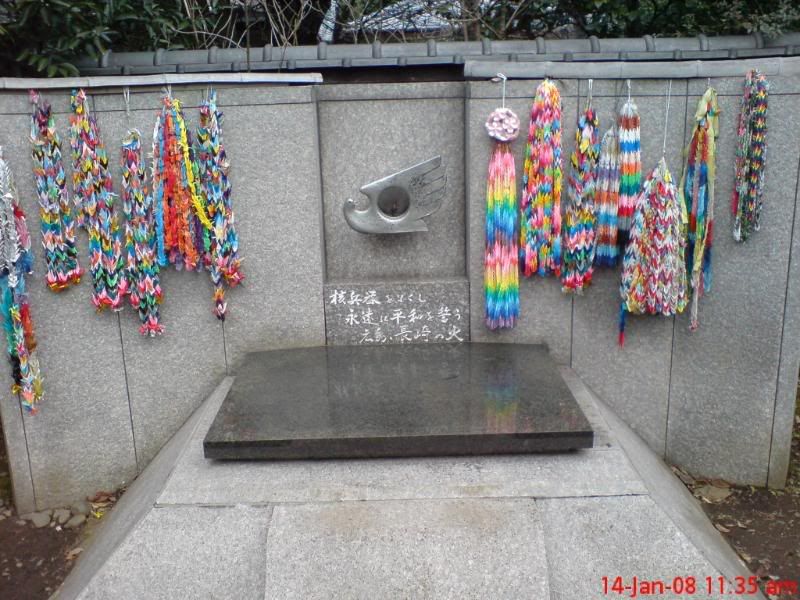
|  August 1990 - Association for the Flame of Hiroshima & Nagasaki, Ueno Toshogu Shrine, Ueno Koen / Ueno Park, Tokyo (Japan). August 1990 - Association for the Flame of Hiroshima & Nagasaki, Ueno Toshogu Shrine, Ueno Koen / Ueno Park, Tokyo (Japan).  "We hereby pledge to keep burning the A-bomb flame[s from Hiroshima & Nagasaki], convinced that this monument should contribute to strengthening the worldwide people’s movement to abolish nuclear weapons & achieve peace, which is the most urgent task for the people across the borders." Visited by EWL. "We hereby pledge to keep burning the A-bomb flame[s from Hiroshima & Nagasaki], convinced that this monument should contribute to strengthening the worldwide people’s movement to abolish nuclear weapons & achieve peace, which is the most urgent task for the people across the borders." Visited by EWL.
|


|  Date? - Peace Carillon, Shinjuku Central Park, Tokyo (Japan). Date? - Peace Carillon, Shinjuku Central Park, Tokyo (Japan).  Features a dozen bells, growing in size the higher they are hung. Visited by EWL. Other photos pending. Features a dozen bells, growing in size the higher they are hung. Visited by EWL. Other photos pending.
|
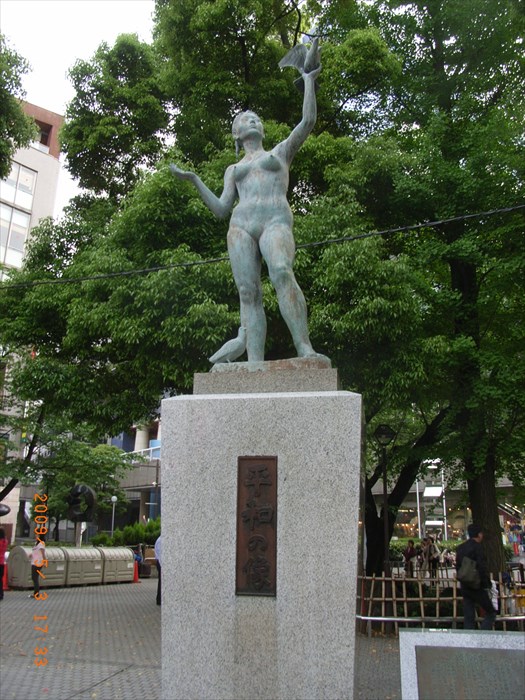
|  1990 - Peace Statue, West Gate Park, Ikebukuro, Tokyo (Japan). 1990 - Peace Statue, West Gate Park, Ikebukuro, Tokyo (Japan).  Bronze statue made by Takeuchi Fubou in 1990. Bronze statue made by Takeuchi Fubou in 1990.
|

|  1996 - "Wish Tree for Peace," Akasaka Hikawa Shrine, Tokyo (Japan). 1996 - "Wish Tree for Peace," Akasaka Hikawa Shrine, Tokyo (Japan).  "A ginkgo tree which is 400 years old and grows branches and leaves splendidly even now, although it has a huge hole in its trunk as a result of an air bombing during WW-II. 'Wish Tree,' a project to wish for peace, [has been] placed around this ginkgo tree. After the spectators write their wishes on white pieces of paper and tie them onto the branches, the messages will be sent to Yoko Ono and will be stored in the Peace Monument [sic]."
"A ginkgo tree which is 400 years old and grows branches and leaves splendidly even now, although it has a huge hole in its trunk as a result of an air bombing during WW-II. 'Wish Tree,' a project to wish for peace, [has been] placed around this ginkgo tree. After the spectators write their wishes on white pieces of paper and tie them onto the branches, the messages will be sent to Yoko Ono and will be stored in the Peace Monument [sic]."
|

|  2002 - Yushukan Museum, Yasukuni Jinga Shrine, Chiyoda, Tokyo (Japan). 2002 - Yushukan Museum, Yasukuni Jinga Shrine, Chiyoda, Tokyo (Japan).  "The museum was established in 1882, and describes itself as and oldest war and military museum in Japan. It has been accused of containing some revisionism in its accounts of Japan's actions in World War II, as well as glorifying Japan's aggressive militaristic past." "The museum was established in 1882, and describes itself as and oldest war and military museum in Japan. It has been accused of containing some revisionism in its accounts of Japan's actions in World War II, as well as glorifying Japan's aggressive militaristic past."
|
Comments: While we were in Japan, an English language newspaper published a review of Paul Theroux's newest book, "Ghost Train to the Eastern Star." He said he'd never liked Tokyo but finally realized it's not because he had anyghing against Tokyo per se. It's just because he dislikes all megacities. This colored my thoughts all the time we were in Tokyo. Of course I wouldn't like to live in Tokyo -- for the same reason we no longer live in Atlanta, Boston, London, New York, Paris, Philadelphia, Seattle, Washington, or other cities of >3 million people with which we have some familiarity -- but its surging crowds and vertical layers are exciting to witness, at least for a short while. Of course we got around Tokyo by train and those other cities by car, and that difference in perspective has to be taken into account.
Our major achievement in Tokyo was figuring out the address system and then actually walking to the apartment building which houses the World Peace Bell Association (WPBA), 1-17-3-206 Higashi-Ikebukuro, Toshima-ku Tokyo, 170-0013. Taken by surprize the two gentlemen working in the WPBA office were very gracious, but the language barrier was almost complete.
 After returning home, we communicated by email through a bilingual intermediary, and the WPBA president sent me photos of all WPB's I had not been able to find on-line.
After returning home, we communicated by email through a bilingual intermediary, and the WPBA president sent me photos of all WPB's I had not been able to find on-line.
In Shinjuku (another of Tokyo's mega ring cities), I walked one evening to find the Peace Carillon in Shinjuku Central Park. The park contains a lot of trees, and one part is not visible from another, but I found the tower, then I couldn't read its inscription and still don't know who created it or when or why. Looming above the tower is the Tokyo Municipal Building. So I joined a Japanese group being elevated to its 45th floor observation deck, just in time to see the neon lights come on in Shinjuku and some of Tokyo's other far-flung mega centers. As I left the Municipal Building, I walked across its vast courtyard (where one or two homeless people lurked on the fringes) and was surprized to find a pigeon-soiled female statue of peace which I'd previously found on-line but had no hope of actually locating in Tokyo.
Other sights we visited: The Japanese Crafts Display Hall, Tobu and Isetan Department Stores, the Yasukuni Jinga Shrine, Yushukan Museum, and the Kinokuniya Book Store. Yasukuni and Yushukan were even more interesting than people said they would be. Among the attractions are many mini monuments (such as one for Radhabinod Pal [1886-1867], the Indian judge who voted in the name of peace to accquit the Japanese tried for war crimes at the end of WW-II), a carp pond, and prize-winning flower and bonsai arrangments. We were there on Sunday, and various groups (veterans, musicians, and a unit of WW-II pilot reenactors) were performing on the grounds.
Visiting the bookstore's English language department requires enduring a five-story ride in a tiny elevator, but I was rewarded by finding my name in print on the new-arrivals table (see The Billionaire's Vinegar) and a Japanese-language guidebook for Atlanta, Georgia.
Another Tokyo adventure was taking a series of trains to find the Hiroshima and Nagasaki flame at Toshogu Shrine in Ueno Park and the Display House of the Daigo Fukuryu-Maru (Fifth Lucky Dragon) on made-made land in Toyko Bay. Time did not permit my visiting the other peace museum recommended by Peter van den Dungen, the so-called Centre of the Tokyo Raid and War Damage.
Our second 7-day JR railpass having expired, we took a shuttle bus from Shinjuku to Narita Airport. This was the only time we drove on Japan's modern expressways. We passed right over streets I'd negotiated on foot to find the Display House of the Daigo Fukuryu-Maru.

and 49 not visited
, during a ___-day visit to Japan in October 2008. We traveled almost entirely by train. Our route is approximated on the highway map below. You can use the controls to zoom in and out of this Google Map, as well as pan back and forth. (According to Google, the minimum distance marked on this map is 2,921 km and would require 49 hours of continuous driving.)
Affiliation with the International Network of Museums for Peace (INMP) is indicated below by the INMP logo.



Grounds include famous three monkeys frieze (right image) and huge temple bell. Rinno-ji temple (766) and the Shinkyo / Sacred Bridge are nearby.

"A bell tower originally built by the order of Sakai Tadakatsu between 1624 and 1644. The present structure goes back to 1894, a year after the Great Fire of Kawagoe. It is a three-story tower measuring 16 meters in height. The tower has been telling time to the city's residents for 350 years and has been deemed as a symbol of the city. Currently, the bell can be heard four times a day (6 a.m., 12 p.m., 3 p.m., and 6 p.m.)."
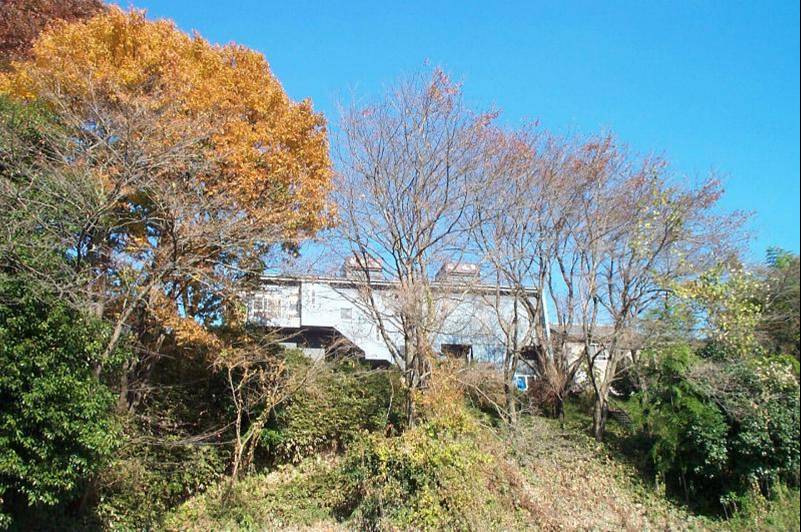



Preserves 14 of the 15 panels painted by Iri & Toshi Maruki between 1950 & 1982 to show the atomic boming of Hiroshima & Nagasaki. Museum includes paintings of Auschwitz, Minamata & Nanking. Click here for Wikipedia article. Member of International Network of Museums for Peace (INMP).



1993 - Peace Museum of Saitama, Monomiyama Park, 241-113 Iwadono, Higashi Matsuyama, Saitama Prefecture (Japan).
"The museum illustrates the tragedy of the war and the importance of peace though the exhibition and movies. Curators are ready to offer further information. On a clear day you can see Mt. Fuji and other distant mountains from the observatory of the 41.5 meters tower." Near Daito Bunka University (Higashi Matsuyama Campus). One of 9 Japanese institutions described in brochure for 6th International Conference of the INMP in 2008.

October 9, 2000 - John Lennon Museum, Saitama Super Arena (4th & 5th floors), 8 Saitama Shintoshin / Saitama New Urban Center, Chuo-ku, Saitama-city, Saitama Prefecture (Japan).
"Opened on the 60th anniversary of John Lennon’s birth. Approved formally by Ms. Yoko Ono, it is the first museum of its kind anywhere in the world."


November 2006 - Chukiren Heiwakinenkan / Chukiren Peace Memorial Museum, Kawagoe, Saitama Prefecture (Japan).
"The core of the museum’s collection, housed in a 180-sq meter warehouse, is the testimony of 300 Japanese veterans who confessed while in custody in China to committing atrocities there, including rape, torture and infanticide. Graphic video and photographic evidence showing some of the most brutal crimes of the Imperial Japanese Army is held in the archives as a resource for scholars." Member of International Network of Museums for Peace (INMP).
Comments: From Narita International Airport, we took the JR "loop" train 3/4 of the way around the city of Tokyo to the distant northern suburb of Omiya, where we encountered a minor problem which plagued us at another dozen or more Japanese railroad stations: Not knowing which of two sides of the station to exit inorder to when we wanted to go. Omiya -- we had decided back in the USA -- would be a base from which we could venture to Nikko at to Saitama.

1966 - Monument to Eternal Peace Between Japan & China, Hanaoka, Nagano Prefecture (Japan).
"In the 1950s, the Japan-China Friendship Association (Nit-Chu Yuko Kyokai) excavated remains of the forced laborers who died in Hanaoka, sent them to the People’s Republic of China, and built a monument to remember the victims and atone for the atrocity."


7th Century - Zenko-ji Temple, Nagano (Japan).
Decorated with banners bearing the imperial crecanthum (spelling?).

Date? - Temple Bell, Zenko-ji Temple, Nagano (Japan).
Rung during opening ceremony of the 1998 Winter Olympic Games.
Comments: We spent most of a day visiting Zenko-ji Temple, saw the temple bell (which rang via remote hook-up to open the Winter Olympics in 1998), and also saw a very unusual small bell atop a tall, shinny steel tower. We enjoyed visiting the many food and souvenir shops which line the long pedestrian avenue leading from the city up to the temple.


About 1700 - Takaoka Tojo Park, Takaoka, Toyama Prefecture (Japan).
Takaoka Castle is destroyed, but its moats remain as an extentive system of lakes and as a waterfowl refuge. The park hosts the annual Manyo Festival, which includes a complete recitation of the Manyo poem (Manyoshu) involving 2,200 people successively reciting all 4,516 of its individual poems (right image).

1933 - Buddhist Statue / Daibutsu, 11-29 Otemachi, Takaoka, Toyama Prefecture (Japan).
"Constructed in 1745 but was often in the damage of a fire. Since Takaoka city has been is [sic] famous for manifucture [sic] of copper utensil, this current buddha statue made by bronze in 1933 is the symbol of Takaoka city. It might be selected as one of three major buddha statue in Japan, but Gifu Buddha statue is also said to be one ot those. Total Height : 15.85m." Strings of metalic peace cranes are on display behind the statue.

1961 - "Japanese temple bell of peace and friendship," just west of the Iowa Judicial Building on the south side of Court Avenue, State Capitol grounds, Des Moines, Iowa, USA. Gift from Prefecture of Yamanashi (Japan) to the State of Iowa in gratitude for agricultural relief in 1959. Cast by Oigo Bell Works, Takaoka, Toyama Prefecture (Japan). Photo by EWL.


Date? - Bell Store, Suehiro-dori, Takaoka, Toyama Prefecture (Japan).
Across public square from Takaoka railroad station.


Future - Three World Peace Bells outside building in which they were cast at Oigo Bell Works, Takaoka, Toyama Prefecture (Japan).
Last three bells cast for the World Peace Bell Association (WPBA) of Tokyo (Japan). Photo by EWL taken October 3, 2008.
Comments: Takaoka is reputed to be a city of metal working and metal craftsmen. We wanted to visit Oigo Bell Works because we'd learned that it cast the famous Peace Bell for the Niroshima Peace Memorial Park in 1964. (The Oigo foundry also cast the 1984 Ohara bell for Duluth, Minnesota, and I'd also determined that it had cast the 1961 Yamanashi bell for the State of Iowa by standing inside the bell, photographing its inscription, and asking Shigeko for an interpretation.) Thanks to arrangements made the day before, we were met on arrival by Japanese-speaking Britisher Jonathan Perry who was in Takaoka to teach English and work part-time at Takaoka city hall. He'd never previously heard of Oigo Bell Works but had phoned ahead for an appointment and cheerfully led us there by taxi.
2005? - Railroad Station, Kanazawa, Ishikawa Prefecture (Japan).


1622 - Hikone Castle, Hikone, Shiga Prefecture (Japan).
Castle grounds have "Bell of the Hours" & a distant view of Lake Biwa.
Comments: After Takahoka, we had to change trains in Kanazawa which has very fancy modern railroad station. We took a circular bus ride around the central city and saw department stores and another castle, but the most interesting sights were our fellow passengers, Japanese in a holiday mood who jumpted frequently on and off the bus.



1893 - Japanese Pavilion, World's Columbian Exposition (Chicago World's Fair), Chicago, Illinois (USA). "A replica of the Phoenix Hall (Hodo), which is the only surviving building of Fujiwara Michinaga's palace [at Uji, near Kyoto], which was converted to a temple, Byodo-in, in 1052." Site is now Osaka Garden (right image), and one stone lantern remains from the 1893 exposition. A permanent replica was constructed about 1970 in the Valley of the Temples, Oahu Island, Hawaii (qv).






About 1970 - Peace Bell, Byodo-In Temple, Valley of the Temples, Oahu Island, Hawaii (USA). Temple completed June 7, 1968, & is a replica of Byodo-in Temple which was originally built in 998 in the city of Uji, Kyoto Prefecture (Japan). Another replica served as Japan's official exhibit at the World's Columbian Exposition in Chicago in 1893.


1977 - Kyoto University of Art & Design, 2-116 Uryuzan, Kitashirakawa, Sakyo-ku, Kyoto (Japan).
"One of the largest art universities in Japan with 10,000 students enrolled... Has 'Peace Building by Art' as the academic philosophy." One of 3 institutions hosting 6th International Conference of the International Network of Museums for Peace (INMP) in October 2008. One of 9 Japanese institutions described in brochure for 6th International Conference of the INMP in 2008.
July 14, 1993 - Casting of the International Friendship Bell for Oak Ridge, Tennessee (USA), by Sotetsu Iwazawa at his foundry, Kyoto (Japan).





May 18, 1992 - Kyoto Museum for World Peace / Daigaku Kokusai Heiwa Myujiamu, Ritsumeikan University, 56-1 Kita-machi, Toujiin, Kita-ku, Kyoto (Japan).
"World's first peace museum established in a university." Founding director was Prof. Ikuro Anzai. One of 3 institutions hosting 6th International Conference of the International Network of Museums for Peace (INMP) in October 2008. One of 9 Japanese institutions described in brochure for 6th International Conference of the INMP in 2008. Member of International Network of Museums for Peace (INMP).

Date? - Wadatsumi-zo, Stairway, Kyoto Musuem for World Peace, Kyoto (Japan).
"The centerpiece of the museum's art collection. Created by Shin Hongo [1905-1980] to depict the 'Sighs, Anger and Pain' of college students drafted into the armed forces during the student mobilization of October 1943."

2005 - Mutchan Peace Sculpture, First Floor Lounge, Kyoto Musuem for World Peace, Kyoto (Japan).
"Mutchan was a young girl who starved to death in an air-raid shelter where she had been quarantined because she had tuberculosis. A newspaper article about her death evoked a huge response. Funds poured in for Heijin Murakami to make the sculpture and place [the original] in a park in Oita City."

May 2003 - International Children's Peace Sculpture, Kyoto Musuem for World Peace, Kyoto (Japan).
Model of a sculpture made by Kyoto HS students after "Travis, a junior HS student from New Mexico," said at a peace seminar in Hiroshima that he'd like to see such sculptures erected all over the world. Man in photo is Prof. Ikuro Anzai, founding director of the museum.



Date? - "Firebird--Past and Present," First Floor Lounge, Kyoto Museum for World Peace, Kyoto (Japan).
"Two figures from the anime series Hi no Tori / Firebird (or Phoenix) by Osamu Tezuka [1928-1989], Japan's most famous cartoonist. The Firebird series was Tezuka's means of expressing the horror of war and his strong desire for peace. Thus, we feel his Phoenix is a fitting symbol for the Museum's strong yearning to learn from the terrible lessons of war."


October 6-10, 2008 - 6th International Conference of the International Network of Museums for Peace (INMP) at the Kyoto Museum for World Peace (Ritsumeikan University), Kyoto University of Arts and Design, and Hiroshima Peace Memorial Museum.
Comments: We slept five nights in Kyoto in a first class hotel (the rate subsidized as part of our conference registration). All conference sessions were a bus ride away -- the first three days at Ritsumeikan University and the fourth day at the Kyoto University of Art & Design. Click here to see the text of the PowerPoint presentation I made on the first day of the conference. Lots of good papers were read, and conference participants learned a lot from each other. As at any conference, the best part was mixing with other participants. We met museum directors and others from Canada, Czech Republic, China, Guam, India, Italy, Japan, Kampuchea, Korea, Netherlands, New Zealand, Pakistan, Spain, Sweden, USA, Uzbekistan, and Vietnam. According to conference organizers, Japanese law prevented them from ever issuing a list of confernce participants. Also unfortunatelyly, neither the International Network of Museums for Peace (INMP) nor any of the Japanese host institutions has posted anything about the conference on their websites. Click here for a little information on this website. It's not much, but it's more than you can find anywhere else.Built by parents at the high school in 1948, dedicated on 3rd anniersary of the bomb, and moved to present location in 1957. Depicts "E=MC squared" because the words "Atomic Bomb" would have been denied by the occupying authorities. #35 of 56 "cenotaphs & monuments" on the Virtual E-Tour. Photo by EWL.
1949 - Bell of Peace, Tamon-in Temple, near Hijiyama Park (just east of Kyobashi-gawa River), Hiroshima (Japan).
Original bell was taken by military during World War II. Empty bell tower was among very few wooden structures to survive A-bomb on August 6, 1945. Replacement "Bell of Peace" installed in 1949 is first Japanese peace bell? Image is from "A-bombed Structures Speak -- The First Special Exhibition of Fy 2008," Hiroshima Peace Memorial Museum. It shows the 1949 bell hanging under a beam cracked by the A-bomb blast.




1950 - "The Bell of Banzai for Absolute Peace," Taihei Temple, Uwajima, Ehime, Shikoku Island (Japan).
Replaced temple bell seized by military during World War II. Cast (including coins from 26 countries) by Chiyoji Nakagawa [1905-1972], mayor of Uwajima 1959-1967 and 1971-1972. Original peace bell and model for Japanese Peace Bell at the United Nations. Right image is miniature of the real bell.


June 8, 1954 - Japanese Peace Bell, West Court Garden, Secretariat Building, United Nations (UN), New York City, New York (USA). Cast (including coins & metal from about 60 UN member countries) by Chiyoji Nakagawa [1905-1972] on October 24, 1952, at "the Tada Factory" (Japan). Gift to the UN from the UN Assn. of Japan. Rung on the Vernal Equinox and on 21 September to coincide with the opening of the UN General Assembly and the International Day of Peace. Click here for Wikipedia article. Entry #756 in the "Peace Movement Directory" by James Richard Bennett (2001). Click here for Japanese website about the bell.



August 24, 1955 - Hiroshima Peace Memorial Museum, 1-2 Nakajima-cho, Naka-ku, Hiroshima (Japan).
At site of the atomic bomb on August 6, 1945. New museum building (1994, left) + original musuem building (1955, center) + International Conference Center (1989, right). Click here for a museum guide with many good photos. Click here for Wikipedia article. One of 3 institutions hosting 6th International Conference of the International Network of Museums for Peace (INMP) in October 2008. One of 9 Japanese institutions described in brochure for 6th International Conference of the INMP in 2008. #27 of 56 "cenotaphs & monuments" on the Virtual E-Tour. Click here for all examples of the phrase "peace memorial."

September 20, 1964 - Hiroshima Peace Bell, Peace Memorial Park, Hiroshima (Japan).
Large bell, permanently outdoors. Surface of the bell is a map of the world. Its "sweet spot" is an atomic symbol. Designed by Masahiko Katori [1899-1988]. Cast by Oigo Bell Works, Takaoka, Toyama Prefecture (Japan). #08 of 56 "cenotaphs & monuments" on the Virtual E-Tour. Middle image shows Ram Uppuluri of Oak Ridge, Tennessee, at the bell on July 15, 1993. Middle image by Herman Postma.

August 6, 1965 - World Friendship Center (WFC), 8-10 Higashi Kan-on, Nishi-ku, Hiroshima (Japan).
Founded on 20th anniversary of the bomb by American Barbara Leonard Reynolds [1915-1990] who also founded the Peace Resources Center (PRC) at Wilmington College of Ohio (USA) in 1975. "Not only a 'home away from home' for travelers to Hiroshima, it is a place where local Hiroshima residents volunteer their hospitality of peace in a variety of activities." Supported by Brethren Volunteer Service (BVS) & by the American Committee of the WFC, currently chaired by Mary Ann Albert of Warsaw, Indiana (USA).


1966 - Peace Pagoda, on hill north of railway station, Hiroshima (Japan).
Nipponzan Myohoji Buddhist Order. Commemorates lives lost in the A-bomb blast, and contains gifts of Buddha's ashes from the then Prime Minister of India and from Mongolian Buddhists. Visited by RH.



1967 - Hiroshima Peace Bell, Peace Memorial Museum (East Building), Hiroshima (Japan).
Small bell, displayed indoors (left image), and rung outdoors (right image) during the annual Peace Memorial Ceremony on August 6 (Hiroshima Day). Designed by Masahiko Katori [1899-1988]. Has calligraphy by Shigeru Yoshida [1878-1967], former prime minister of Japan. Cast by Oigo Bell Works, Takaoka, Toyama Prefecture (Japan). Left image by Satoko Nishizawa (Hiroshima Boys Choir).
Comments: On Friday morning, all conference participants (or at least all from outside Japan) took the same Sinkansen from Kyoto to Hiroshima, and two chartered buses deposited us directly into Peace Memorial Park. The park is the world capital of peace monuments, but only a selected few are shown above. (Click here for my complete Hiroshima webpage.)
1912 - Billiken, Shinsekai District, Tennoji, Osaka (Japan).
"The God of Things As They Ought to Be."
1970 Tower for World Peace, Church of Perfect Liberty (PL), Osaka (Japan).
"Reaching to 180 metres (590 feet) in height,..the symbol and quintessence of the most sophisticated contemporary technology (sprayed concrete). It can be seen as far away as Kobe City. The unique shape, originally designed in clay by PL's late Second Founder. It's unique pointing finger-like shape symbolizes the Second Founder's revelation that 'the truth is one'– an understanding that's basic to realizing the desire for the eternal peace and welfare of humankind."



1970 Japanese Peace Bell from United Nations in New York City is displayed for six months in the UN pavilion at Expo '70, now Expo Memorial Park, Suita, Osaka (Japan). The bell is rung every day at Noon. Click here for another webside about Expo'70.



1990 International Friendship Pavilion, City of Osaka Pavilion, International Garden and Greenery Exposition (also known as Hana-haku, ''Flower Expo'' and Expo '90), now Hattori Ryokuchi Park [sic], Osaka (Japan).

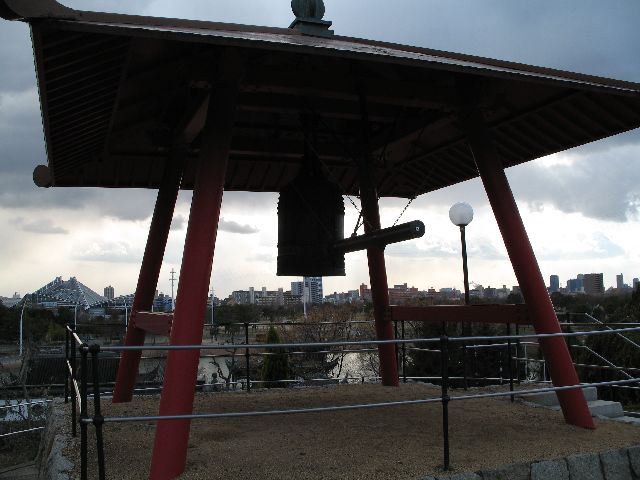


March 1990 - World Peace Bell, Tsurumi Ryokuchi Park [sic], Osaka (Japan).
Installed & dedicated during International Garden and Greenery Exposition (also known as Hana-haku, ''Flower Expo'' and Expo '90). Visited by the Emperor & Empress on April 23, 1990.





1991 - Osaka International Peace Center (Peace Osaka), 2-1 Osaka-jo, Chuou-ku, Osaka (Japan).
Three primary themes: The Osaka air raid, the 15-Year War & Aspiration for Peace. One of 9 Japanese institutions described in brochure for 6th International Conference of the INMP in 2008. Member of International Network of Museums for Peace (INMP).

1998 - 3rd International Conference of the International Network of Museums for Peace (INMP) in Osaka and Kyoto (Japan). Arranged by a number of Japanese museums. Theme: "The contribution of museums to world peace."




September 11, 2005 - World Peace Bell, Motohama Ryokuchi Park, Amagasaki, Hyougo Prefecture (Japan), near Osaka.
Images courtesy of WPBA.
Comments: To lay over in in Osaka, we aimed for Tennoji on the south side of the city mainly because it seemed to be a good point from which to depart to Shirahama. But we guessed well. On Saturday evening we walked through a zoo and past an art museum to Shinsekai which proved to be an entertainment district with the Eifel-like Osaka Tower, many bright lights, pachinko parlors, restaurants, "Billiken" statues, and "Billiken" dolls for sale. We'd never encountered Billiken before but later learned that he is not only the darlingof Osaka but also the mascot of St. Louis University in Missouri (USA).


About 1000 - Kumano Kodo (pilgrimage route), Wakayama Prefecture, Kii Peninsula (Japan).
With Takijiri-Oji, plus at least one other oji, tea house, etc. Also a grove of large trees admired (and saved?) by Minakata Kumagusu [1867-1941].
1889 - Kumano Hongu-Taisha (Grand Shrine), Tanabe, Wakayama Prefecture, Kii Peninsula (Japan).
Shinto shrine. Part of the Kumano Sanzan in the UNESCO World Heritage site "Sacred Sites and Pilgrimage Routes in the Kii Mountain Range."
April 1965 - Minakata Kumagusu Museum, Shirahama, Wakayama Prefecture (Japan).
Houses much of the books, specimens, and memorabilia of famed scientist Minakata Kumagusu [1867-1941].



2002 - Hiroshima Flame Monument, Hoshino, Fukuoka Prefecture, Kyushu Island (Japan).
"Image shows Takudou Yamamoto displaying a flame that has been burning continuously since the 1945 atomic bombing of Hiroshima, and was brought to the western Japanese village of Hoshino by his father Tatsuo, who kept it personally for more than two decades."
Comments: After Osaka, we decided to bypass Nara, overriding Shigeko's strong recommendation. She'd fallen in love with Nara as a student in the 1940's, then taken her Indian husband there after they met and married at Indiana University. (Their familiarity with Nara helps explain why the first proposals for bringing a Japanese peace bell to East Tennessee also included stone lanterns and a deer park.) But our time was limited and -- having worn ourseves out walking miles to see the shrines at Nikko -- we bypassed Nara in order to save time for other adventures.- Boys preparing for an upcoming festival, Shingu, ____ Prefecture (Japan).
- Scene from JR Wide Body train between Shingu & Nagoya (Japan).
- Near railroad station, Nagoya, Nagoya Prefecture (Japan).
March 15, 1937 - Nagoya Pan-Pacific Peace Exposition, Minami Ward , Nagoya (Japan). A world's fair held from 15 March to 31 May 1937. Twenty-eight countries were represented, including Canada & USA. Click here for YouTube animation of exposition buildings in Japanese. Higashiyama Zoo & Botanical Gardens was opened the same year.
Comments: From Shirahama, we took a JR local train to Shingu where I tried to exchange some dollars for yen. A bank teller carried my passport and travelers cheque away from her window, and she and two other bank employees huddled over them for ten minutes. Worried about missing our train and stranding Schera at the railroad station, I insisted on the return of my documents and fled the bank, leaving the employees to wonder what game I was pursung. For my part, I wondered why a small town bank (which had foreign exhange rates posted eletronically in its lobby) couldn't make a simple exchange transaction just as quickly as at the counters in airports. (Later -- in Kawasaki -- we had no problem exchanging dollars for yen.)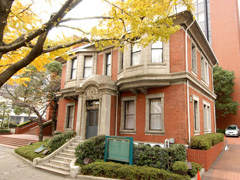


1979 - Toda Peace Memorial Hall, Yamashita Park, Yokohama (Japan).
"One of seven established across the country as part of Soka Gakkai's effort to promote the message of peace in Japan." Named for Josai Toda [1900-1958]. House was originally constructed in 1922 for the British delegation to Japan.

1983 - "Peace Boat" (SS Topaz), Yokohama (Japan).
Has conducted 53 "Voyages for Peace" since 1983.



1982 - Nakahara Peace Park, Kosugi Area, Kawasaki, Kanagawa Prefecture (Japan).
Site of base given up by U.S. Army in 1975 (printed military literature for Vietnam). Park contains Kawasaki Peace Museum (1992) & numerous sculptures, including "two parallel lightning bolts of assembled stone" (1983) by American sculptor James Sanborn. Photos by EWL 10/08.



1992 - Kawasaki Peace Museum, 1957-1 Kizuki Sumiyoshi-cho, Nakahara-ku, Kawasaki (Japan).
One of 9 Japanese institutions described in brochure for 6th International Conference of the INMP in 2008.

1998 - Kanagawa Plaza for Global Citizenship (KPGC) - Earth Plaza, 1-2-1 Kosugaya, Sakae-ku, Yokohama, Kanagawa Prefecture (Japan).
Exhibits particularly oriented to children. One of 9 Japanese institutions described in brochure for 6th International Conference of the INMP in 2008.
Comment: Phoned ahead. Received by researcher Takashi Kikuchi. Very interesting museum. Discovered a peace park. Peace parks and gardens are rare in Japan. Is land available only when something is torn down? In this case it was a US Army base.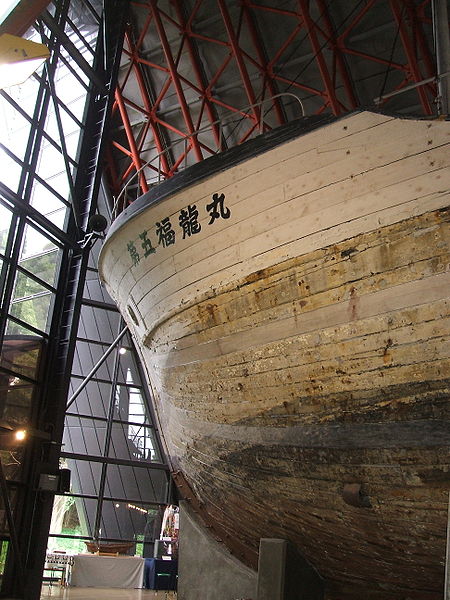


1976 - Display House of the Daigo Fukuryu-Maru / Fifth Lucky Dragon, 3-2 Yumenoshima, Koto-ku, Tokyo (Japan).
Displays the tuna fishing boat contaminated by the US hydrogen bomb test at Bikini Atoll on March 1, 1954. Member of International Network of Museums for Peace (INMP). Visited by EWL.

1977 - Japan Peace Museum, Shiba 1-4-9, Minato-ku, Tokyo (Japan).
Operted by the independent "Citizens' Campaign to Establish Peace Museums, Peace Rooms & Corners in Japan." Director is Susumu Hani.

1982 - World Peace Bell Association (WPBA), 2-36-1-701, Nishi-Ikebukuro, Toshima-ku, Tokyo (Japan).
Founded by Tomijiro Yoshida (President of Life Co., Ltd.) to carry on the work of Chiyoji Nakagawa [1905-1972] and Masahiro Kataoka [d.1983]. The WPBA will place about 21 World Peace Bells (WPB's) in 17 countries around the world. Click here for more information about WPB's.

1983? - Peace Fountain, Showa National Memorial Park, Tachikawa, Tokyo (Japan).
"Depicts a young family, parents and two children, releasing doves into the sky. It is meant to symbolize our sincere hope for world peace. To see the statue, you should enter the park from the Tachikawa gate." Opened in 1983, the park had been a military airfield until 1977.

August 1990 - Association for the Flame of Hiroshima & Nagasaki, Ueno Toshogu Shrine, Ueno Koen / Ueno Park, Tokyo (Japan).
"We hereby pledge to keep burning the A-bomb flame[s from Hiroshima & Nagasaki], convinced that this monument should contribute to strengthening the worldwide people’s movement to abolish nuclear weapons & achieve peace, which is the most urgent task for the people across the borders." Visited by EWL.


Date? - Peace Carillon, Shinjuku Central Park, Tokyo (Japan).
Features a dozen bells, growing in size the higher they are hung. Visited by EWL. Other photos pending.
1990 - Peace Statue, West Gate Park, Ikebukuro, Tokyo (Japan).
Bronze statue made by Takeuchi Fubou in 1990.
Date? - Heiwa no Zo / Peace Statue, HokutoPia, Oji, Tokyo (Japan).
Apparently a copy of the famous statue in Nagasaki.

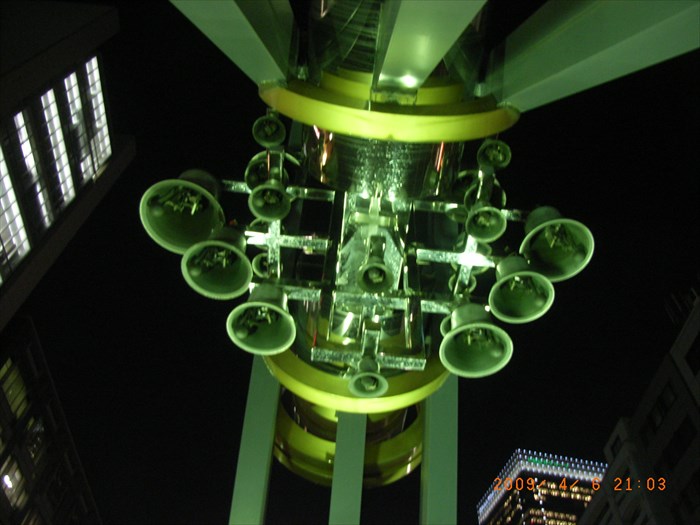
Date? - Peace Memorial Carillon, in front of Tokyo Station, Tokyo (Japan).




About 1991 - Statue of Peace, Citizen's Plaza, Tokyo Municipal Government Building, Shinjuku District, Tokyo (Japan).
Left photo by EWL. Click here for other photo.

1996 - "Wish Tree for Peace," Akasaka Hikawa Shrine, Tokyo (Japan).
"A ginkgo tree which is 400 years old and grows branches and leaves splendidly even now, although it has a huge hole in its trunk as a result of an air bombing during WW-II. 'Wish Tree,' a project to wish for peace, [has been] placed around this ginkgo tree. After the spectators write their wishes on white pieces of paper and tie them onto the branches, the messages will be sent to Yoko Ono and will be stored in the Peace Monument [sic]."
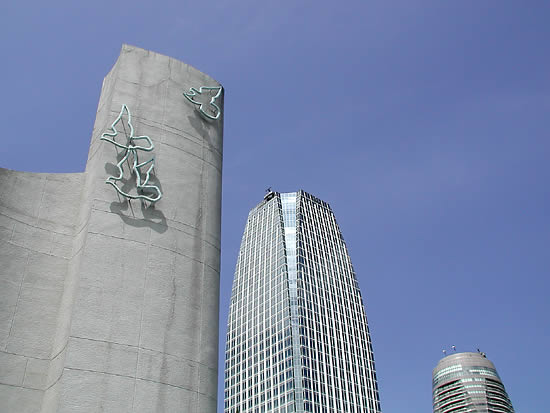
Date? - Children's Peace Monument, Shiba Park, Minato-ku, Tokyo (Japan).
Image shows the monument at left & the tops of some of the buldings which surround the park.




March 9, 2002 - Centre of the Tokyo Raid & War Damage, Kitasuna 1-5-4, Koto-ku, Tokyo (Japan).
Documents the fire bombing of downtown Tokyo (Shitamachi) by some 300 American bombers on March 10, 1945. Director is Katsumoto Saotome. Right image shows "Children's World Peace" statue. Member of International Network of Museums for Peace (INMP).

2002 - Peace Bell, International Christian University (ICU), Minato-Ku, Tokyo (Japan).
Western bell in tall bell tower. The university offers a scholarship named for the Peace Bell

2002 - Yushukan Museum, Yasukuni Jinga Shrine, Chiyoda, Tokyo (Japan).
"The museum was established in 1882, and describes itself as and oldest war and military museum in Japan. It has been accused of containing some revisionism in its accounts of Japan's actions in World War II, as well as glorifying Japan's aggressive militaristic past."
Comments: While we were in Japan, an English language newspaper published a review of Paul Theroux's newest book, "Ghost Train to the Eastern Star." He said he'd never liked Tokyo but finally realized it's not because he had anyghing against Tokyo per se. It's just because he dislikes all megacities. This colored my thoughts all the time we were in Tokyo. Of course I wouldn't like to live in Tokyo -- for the same reason we no longer live in Atlanta, Boston, London, New York, Paris, Philadelphia, Seattle, Washington, or other cities of >3 million people with which we have some familiarity -- but its surging crowds and vertical layers are exciting to witness, at least for a short while. Of course we got around Tokyo by train and those other cities by car, and that difference in perspective has to be taken into account.After returning home, we communicated by email through a bilingual intermediary, and the WPBA president sent me photos of all WPB's I had not been able to find on-line.






















